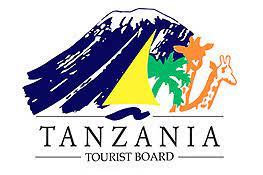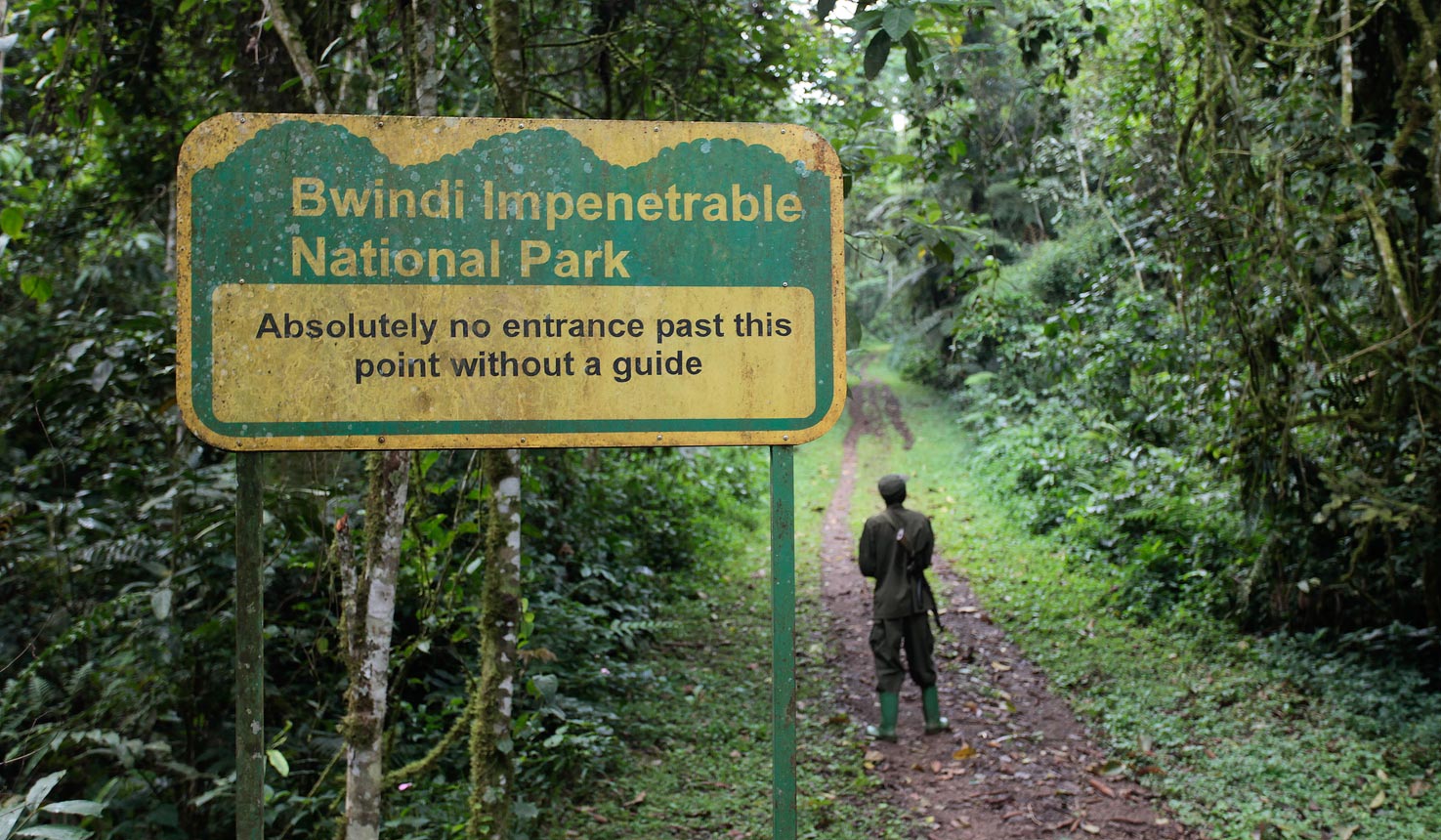Go Gorilla trekking in Uganda safaris
Book your Gorilla trekking in Uganda safaris with us today and get the most affordable quote that gives you the opportunity to meet man's closest relative in their natural habitat
Affordable Gorilla Trekking Safaris to Uganda, Rwanda and Congo
Go Gorilla Trekking safaris from $400
Silverback Gorilla Safaris Ltd is the best and reliable travel partner you can count on for your Uganda Gorilla Safaris, Rwanda Gorilla trekking tours, Congo gorilla trekking trips, Kenya Wildlife safaris and Tanzania safaris. We do provide tailor made Gorilla trekking Uganda packages to meet your budget to the dense rainforests of Bwindi Impenetrable National Park, Mgahinga Gorilla National Park and Volcanoes National Park to meet these gentle species right in their natural habitat.
We help you plan your Uganda Gorilla trekking adventure – taking you through the booking of Uganda gorilla trekking permit, park activities, booking your accommodation, ground transport and much more.
Book Gorilla Trekking in Uganda safaris trip
Imagine sitting still as you capture mountain gorillas right in their natural habitat as they play, feed and much more. Its the best feeling ever to meet the gorillas in the mist as they go by their usual daily business.
As an experienced tour company, gorilla tracking is not just a feeling but a reality that will leave you breathless and a once in a lifetime experience. On a daily basis, we get emails from primate lovers allover the world asking how they can book a gorilla safari to Africa specifically in countries where these gentle apes are found. We go on and guide them on the best gorilla tours to book including short excursions to track gorillas and long primate safaris.
Silverback gorilla Safaris’ team comprises of 8 members stationed at the office ready to handle any questions regarding Uganda gorilla trekking safari bookings and responding to Inquiries. These members are well trained with over 10 years experience. Its therefore a sure deal when you contact us and arrange a gorilla trekking in Uganda safari, Rwanda and Congo.
Other members of the Silverback Gorilla Safaris team are the tour guides and these are over 15 members. These are the masters on ground who take you gorilla tracking in the habitats where these rare primates live.
Special Offer
Most Popular Safaris
We have the best special offers on these popular gorilla trekking in Uganda safari packages. Grab your chance today to go Bwindi gorilla trekking safari.
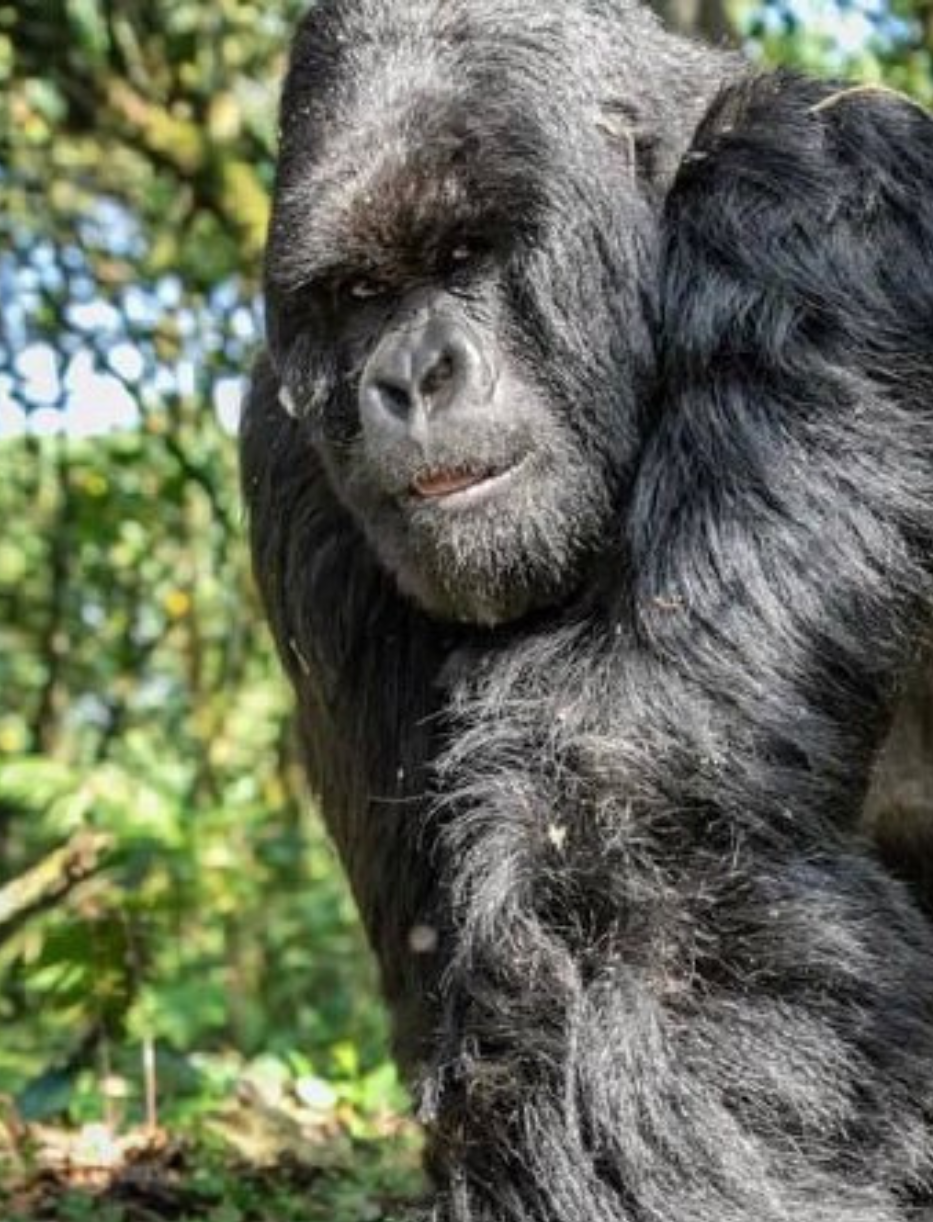
3 Day Gorilla Trekking Uganda
Go gorilla trekking in Uganda on this 3 Days Uganda gorilla tracking safari. Visit the mountain gorillas in their habitat in Bwindi Impenetrable National Park
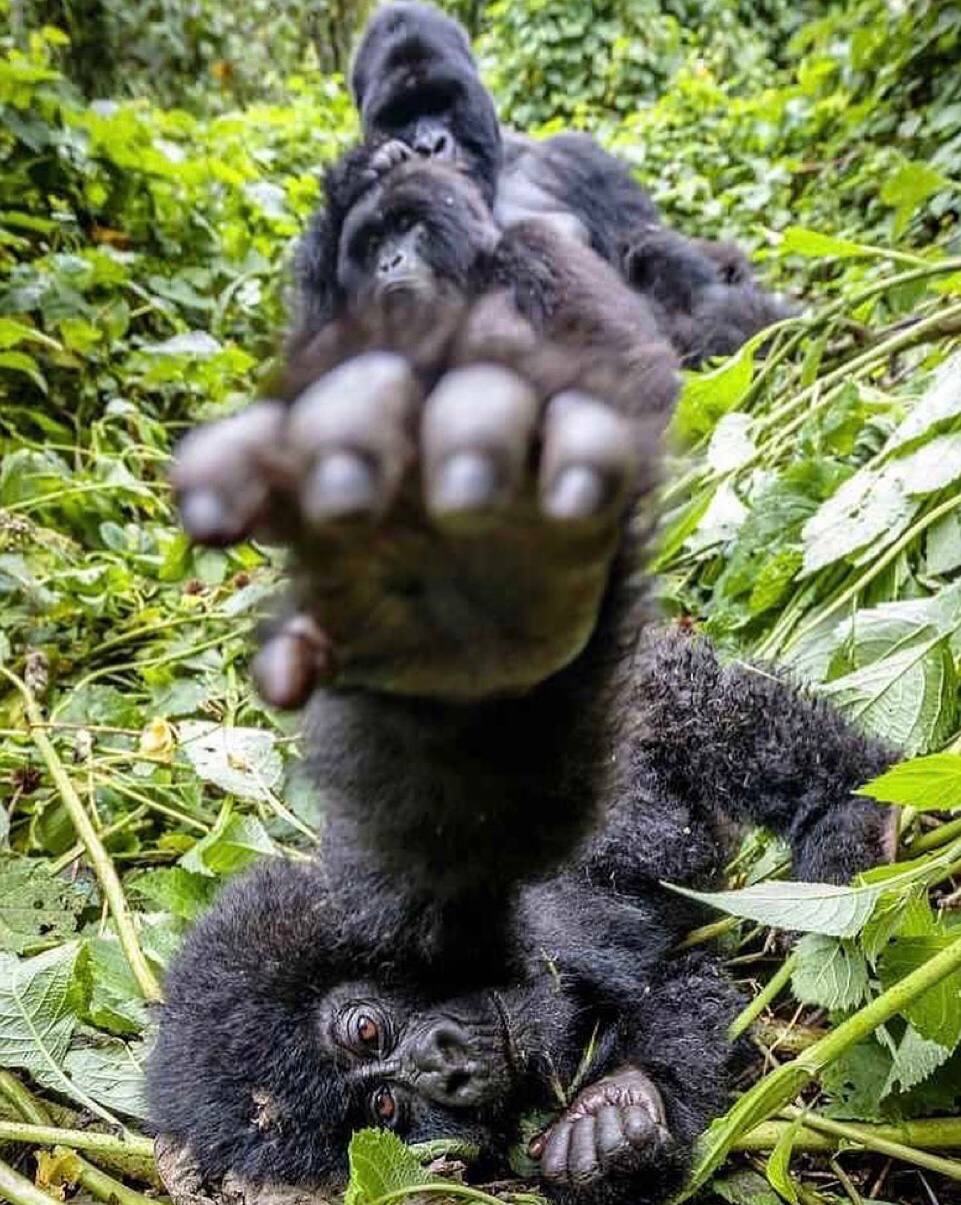
2 day Gorilla Trekking Uganda
This 2 Days gorilla trekking Uganda safari takes you mountain gorilla trekking in Bwindi Impenetrable Forest national park. Its a short Uganda gorilla tour excursion starting from Kisoro or Kabale.
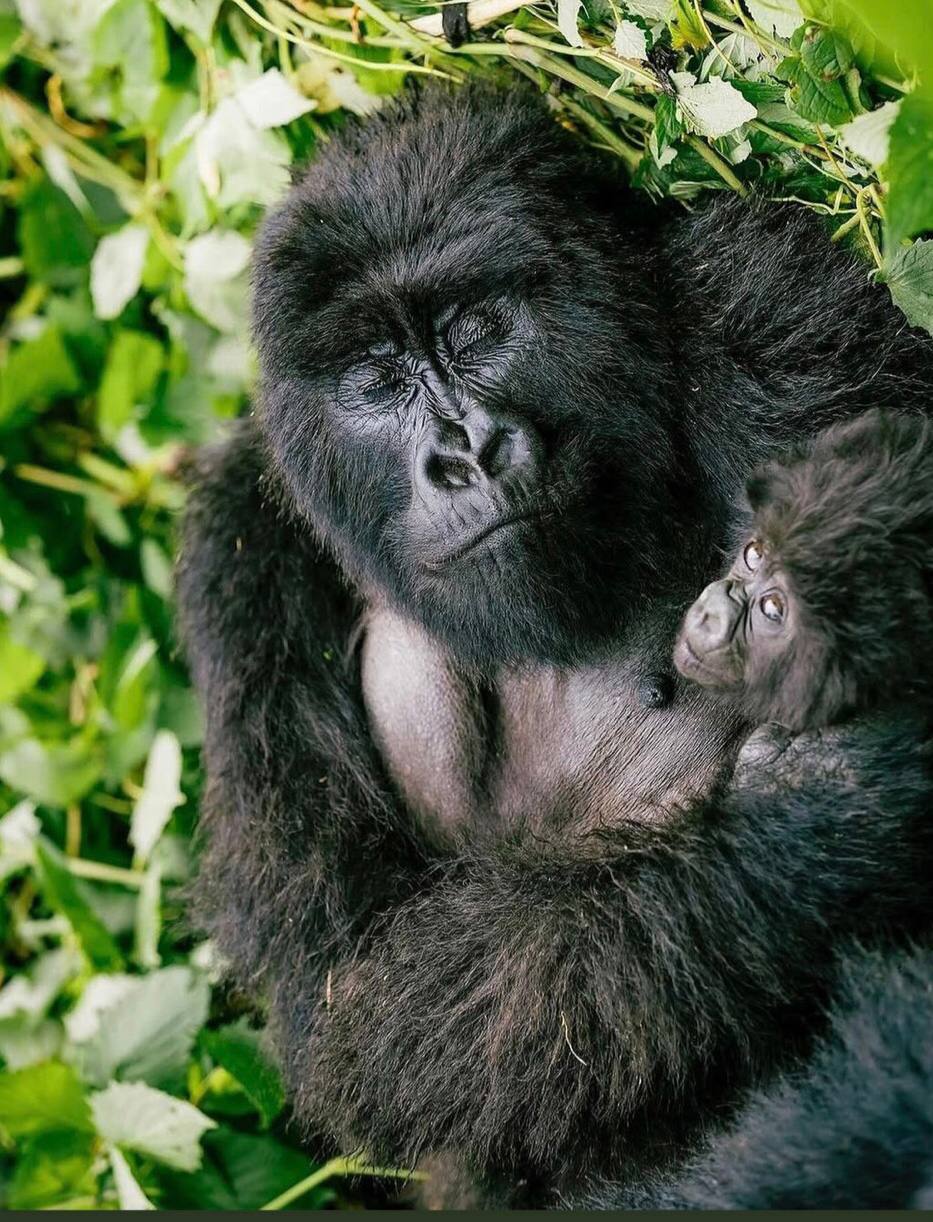
1 Day Gorilla Trekking Uganda
Book this 1 Day Rwanda gorilla trekking safari for a thrilling experience with the primates in Volcanoes National Park. This short Rwanda gorilla tour excursion starts from Kigali
Gorilla Trekking Safety Tips for 2024/2025
Still wondering whether its safe to go gorilla trekking in Uganda, Rwanda and Congo at the moment? Well, this is a common travel question we get from our clients especially after the COVID-19 pandemic. As of 2024/2025 Silverback Gorilla Safaris can reliably confirm that its safe to travel and trek gorillas in Uganda, Rwanda and Congo. The governments of Uganda and Rwanda put is in place standard operation procedures to be followed by tourist and this ensures safety on a gorilla safari or wildlife tour in Uganda and Rwanda.
In DR Congo, most parts are safe and actually on a Congo tour, one can trek both mountain gorillas and lowland gorillas. We have some interesting gorilla packages to book this year like; 3 days Congo gorilla tour, 3 days Uganda gorilla safari, 2 Days Rwanda gorillas, 3 Days Rwanda gorilla trekking trip, 5 Days gorillas & Wildlife tour and much more.
Apart from watching gorillas, you can also book chimpanzee tracking trips to Kibale Forest national park, chimps of Nyungwe National park and other primate tours in Uganda, Rwanda and DR Congo.
Go on and book your next Uganda gorilla tour or wildlife adventure with Silverback Gorilla Safaris Ltd!
Best Gorilla Trekking Tours in Uganda, Rwanda and Congo
There’s nothing incomparable to seeing the silverback and the gorilla family roam around their habitat freely. The experience is unmatched and if you are looking for gorilla trekking Uganda packages that fit within your budget, count on us. Choose gorilla trekking safaris itinerary and our team of specialists will take you through each and everything you would like to know about gorilla trekking in Rwanda, Congo and Uganda as well.
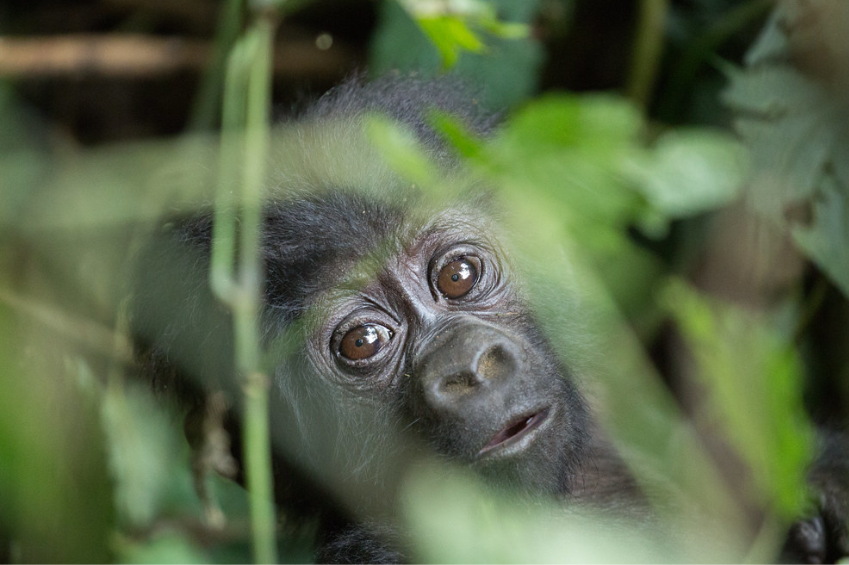
2 Day Rwanda Gorillas Tour
Visit Rwanda on this short 2 days Rwanda gorillas tour expedition and get a chance to spend time with the great apes in Volcanoes national park. This Rwanda safari starts from Kigali
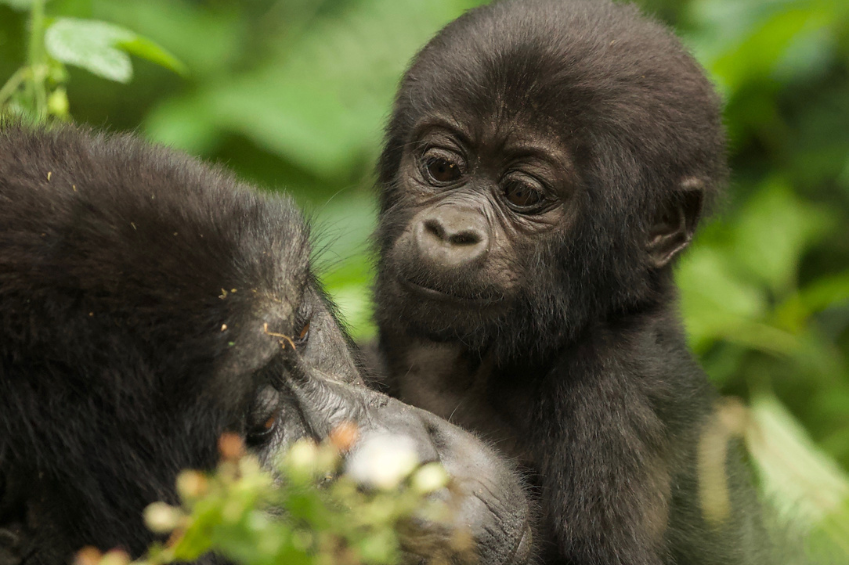
4 Days Uganda Gorilla Trekking Safari
Visit Bwindi Forest for mountain gorilla trekking on our 4 Days Uganda gorilla trekking safari. This primate tour to Uganda takes you closer to the gorillas of Bwindi in their habitats
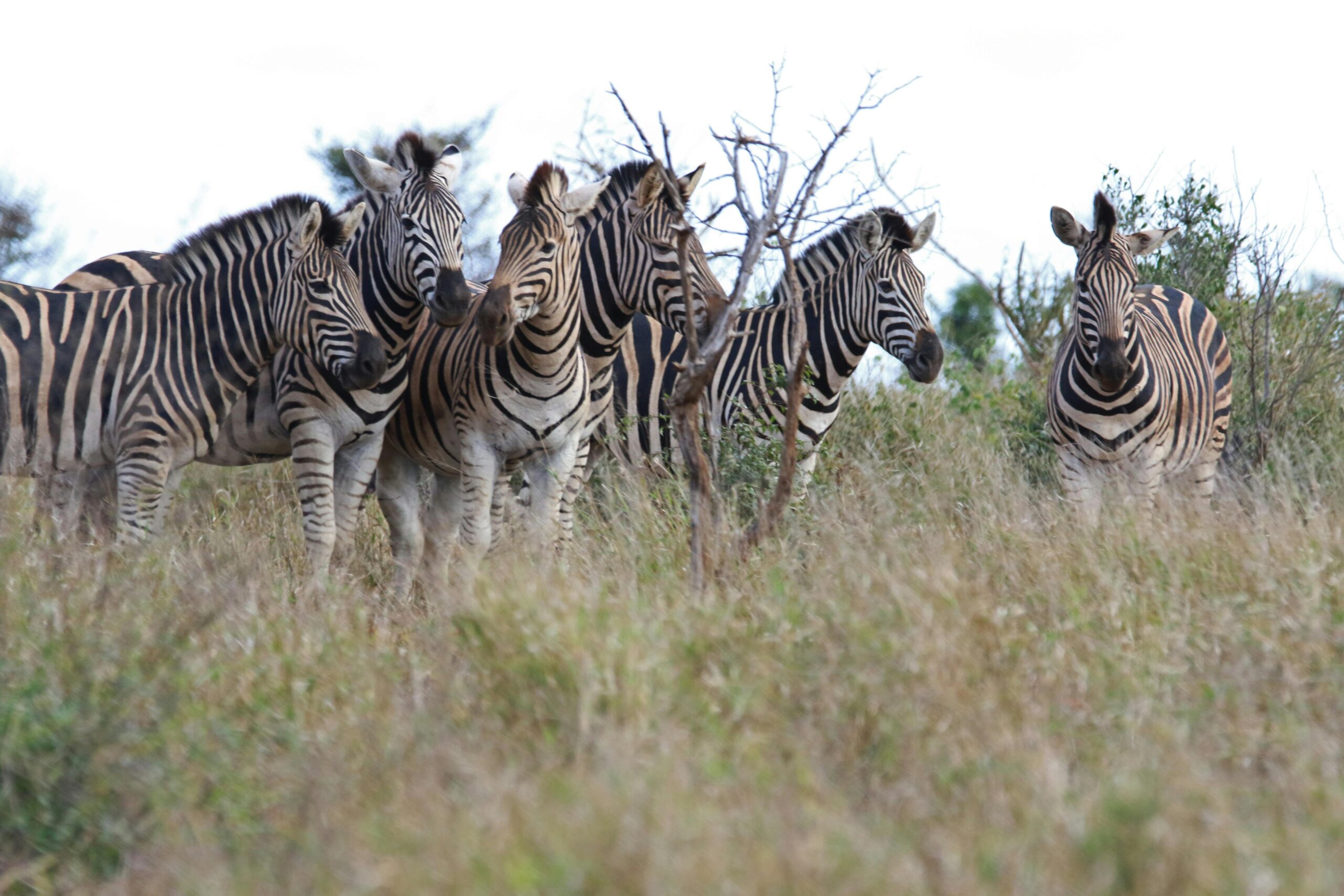
4 days Uganda Gorillas & L.Mburo safari
This 4 days Bwindi gorillas & Lake Mburo safari is an amazing short tour package crafted to expose you to Uganda’s rare mountain gorillas and savanna wildlife species like Zebras, giraffes and much more.
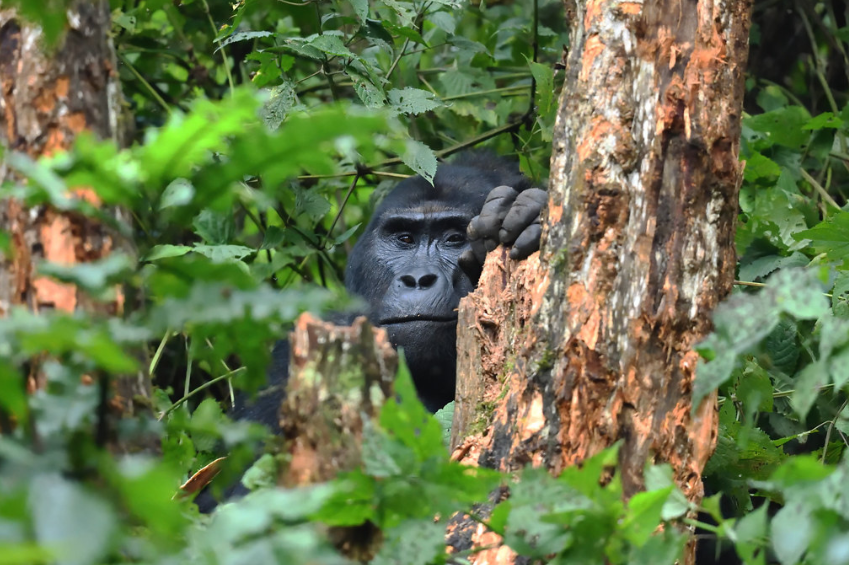
3 Days Rwanda Gorilla Safaris
Book this 3 days Rwanda gorilla safaris for a lifetime experience with the primates in Volcanoes national park. Spend three days while exploring Rwanda’s gorillas on this short holiday.
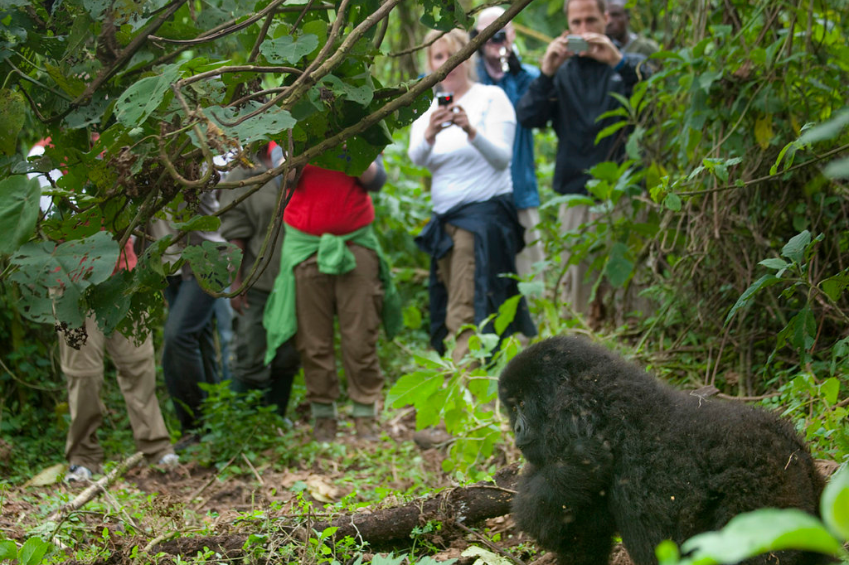
5 Days Rwanda Gorillas & Wildlife
Book a Rwanda safari with us and go gorilla trekking in Volcanoes national park and wildlife viewing in Akagera National Park. Its a real Rwanda wildlife safari adventure goof for holidays.
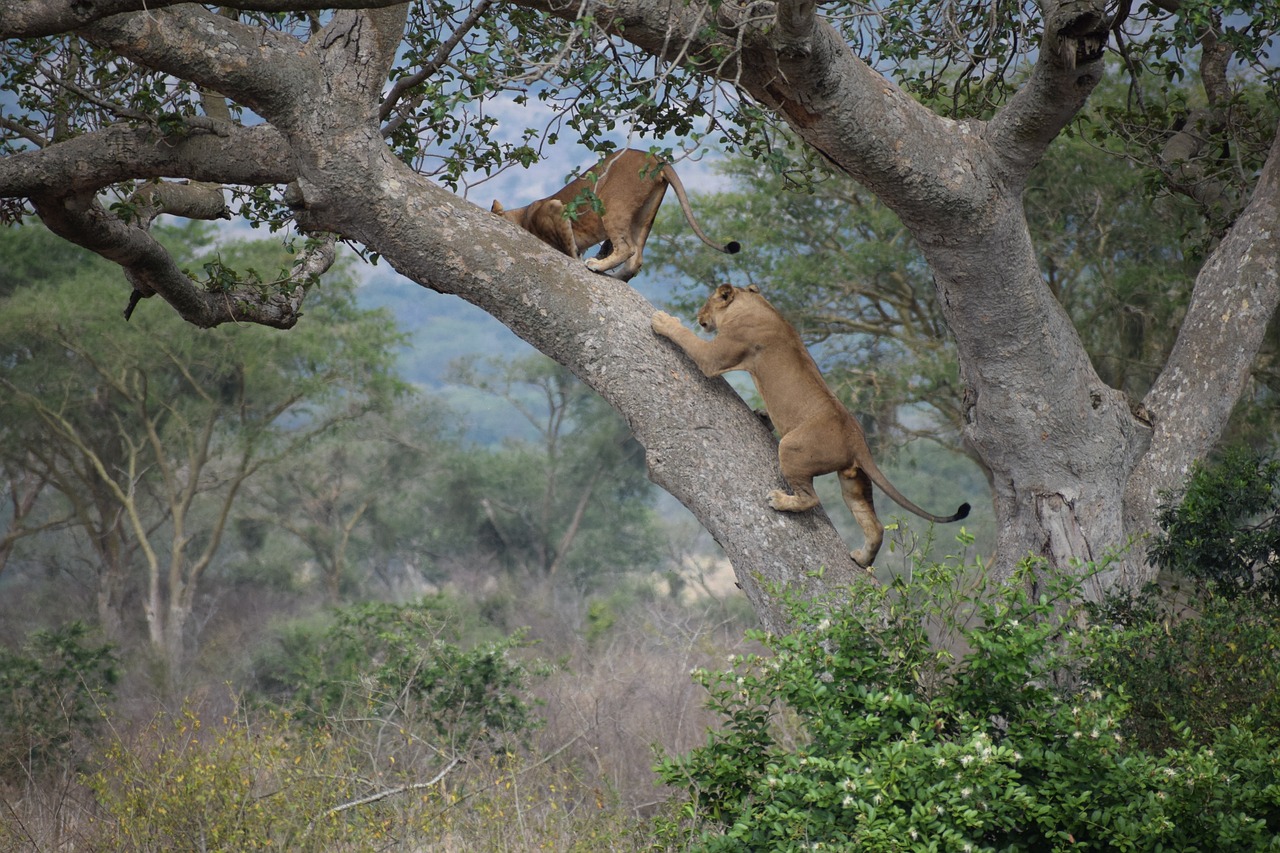
4 Days Tree climbing lions & Gorillas safari
Our 4 days Bwindi gorillas & QENP wildlife safari offers you a chance to indulge yourself into the lush rain-forest of Bwindi and the magical savannas of Queen Elizabeth National Park.
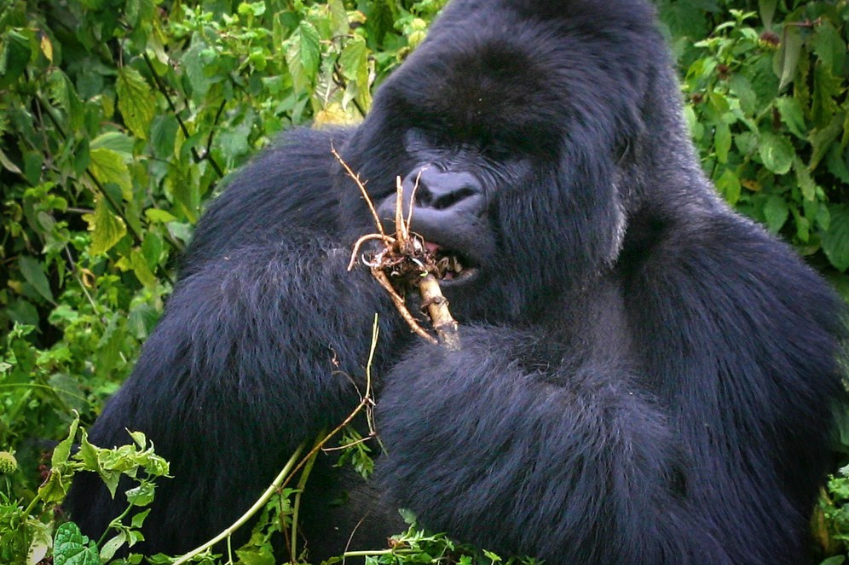
4 Days Congo Gorilla Safaris
This 4 days Congo gorillas & Nyiragongo hike safari takes you gorilla trekking in Virunga national park and Mountain Nyiragongo hiking. This Congo tour adventure is amazing
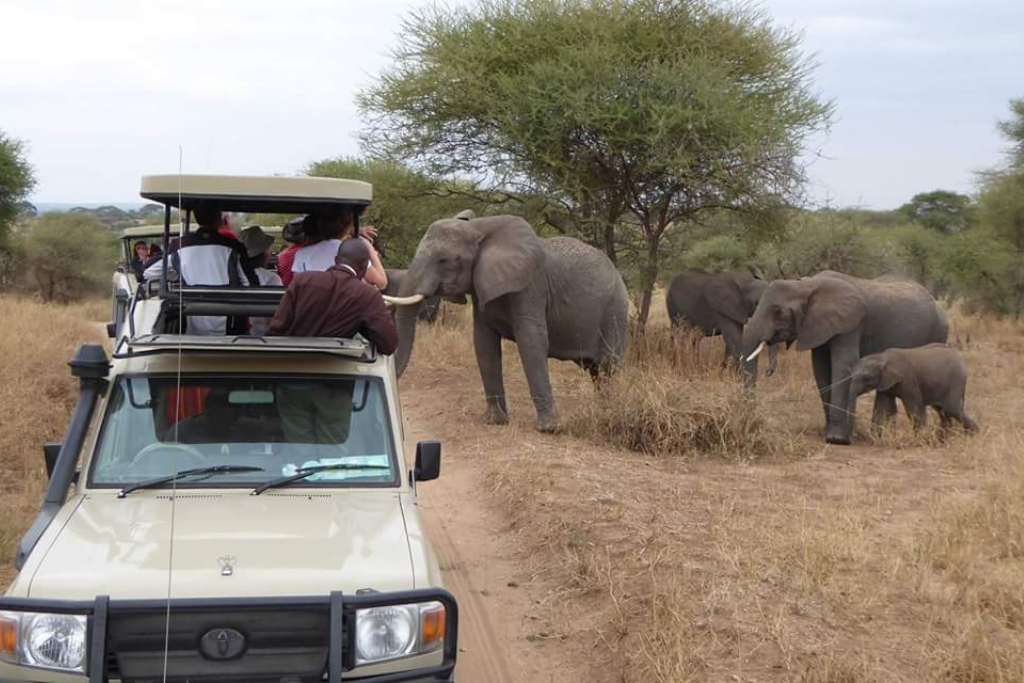
18 Days Uganda – Rwanda Safari
Book this long Africa safari adventure with us. On this 18 days Uganda-Rwanda holiday, you will enjoy double gorilla trekking in Uganda and Rwanda, chimp tracking, wildlife tours and more
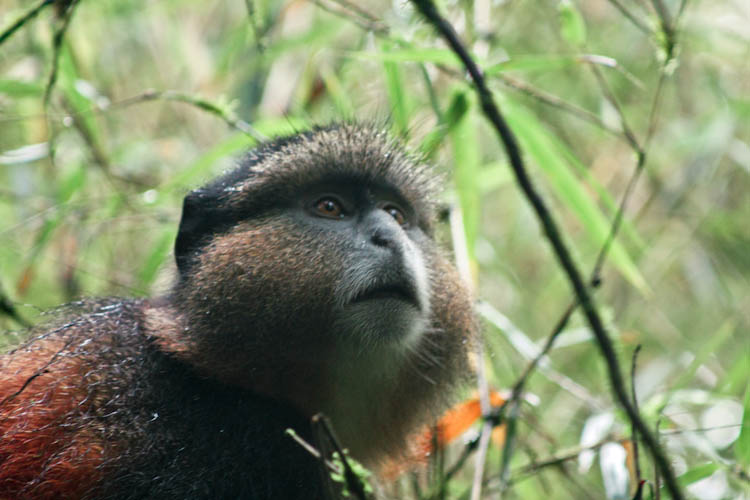
4 Days Mgahinga Gorillas and Golden Monkey safari
Enjoy 4 days Mgahinga gorilla safari, one of the best tour packages that offers you a chance to get up-close with mountain gorillas and golden monkeys in their habitat.
Short Gorilla Trekking Safaris
1 day Mgahinga gorilla trek
1 day gorilla trek Rwanda
1 day Bwindi gorilla trek from Kigali
2 Days Rwanda Gorilla Trekking Safari
2 Days Mgahinga Gorilla Safari
2 days Bwindi gorilla safari
Top Gorilla Trekking Packages
3 days Uganda gorilla tour
3 days Rwanda gorilla tour
3 days Congo lowland gorilla trekking
3 days Congo gorilla trek
3 Days Bwindi Gorilla Habituation
3 Days Bwindi fly-in Gorilla Tour
3 days Bwindi gorilla trek
4 days Virunga gorillas tour
4 days Uganda Rwanda gorilla safari
4 days Rwanda gorillas & golden monkeys
4 days Rwanda gorilla tour
4 days Mgahinga gorilla safari
4 days Congo gorilla trek
4 days Bwindi gorillas & QENP wildlife safari
4 days Bwindi gorillas & Lake Mburo safari
4 days Bwindi gorilla safari
5 days Rwanda gorillas
5 days Rwanda gorillas & wildlife safari
7 Days Rwanda Gorilla Tour & Masai Mara Safari
Let's take you Gorilla Trekking Safaris in Uganda, Rwanda and DR Congo
A Gorilla trekking safaris is ranked the best trip to Africa as it presents you the opportunity to explore and stay with these gentle rare primates – mountain gorillas as they roam freely in their habitat.
Although other tour activities like wildlife game drives are interesting, silverback gorilla safaris spices up someone’s holiday in Africa. It’s always a great feeling to spend time with silverback gorillas in Bwindi Forest, silverback gorillas of Volcanoes national park, Mgahinga and Virunga national park. We have amazing tours to see gorillas in the wild like, 3 days Uganda gorilla trekking package, 2 Days Mgahinga gorilla tour, 1 Day Rwanda short gorilla safari, 3 Days Congo gorilla trip adventure and much more.
We also arrange long silverback gorilla safaris combined with other exciting activities like chimpanzee tracking, mountain climbing, birding tours, cultural walks and more. Its always about you when it comes to coming up with an ideal combined gorilla tour in Uganda, Rwanda and Congo.
Are you interested in Rwanda safaris? A gorilla trekking safari in Rwanda can be combined with Dian Fossey grave hike, plus golden monkey tracking in Volcanoes national park, gorillas of Rwanda plus Kigali city tour, silverback gorilla tours combined with a cultural visit to the Iby’iwacu cultural village, bird watching in Rwanda and more.
For tourists going on Uganda safaris; silverback gorillas safaris can be combined with a visit to Batwa cultural group of people in Bwindi forest, gorilla trekking and a game drive in Queen Elizabeth National park, mountain climbing and much more. Its always action packed in the jungles of Africa with Silverback Gorilla Safaris!
Top Gorilla Trekking Safari Destinations
Bwindi Impenetrable
National Park
Bwindi Impenetrable National Park is one of the amazing places holidaymakers on Uganda safari should consider a must-visit. Set in the extreme Southwestern Uganda in the districts of Kabale, Kanungu and Kisoro, Bwindi is Uganda’s leading gorilla trekking destination.We do arrange short gorilla safaris to Bwindi and long primate excursions to this park.
Volcanoes
National Park
Volcanoes National Park/Parc National des Volcans (PNV) is undoubtedly Rwanda’s most popular travel destination. It is the only place in the republic of Rwanda where a section of the world’s 1063 mountain gorillas can be trekked. Situated suitably within the Virunga Region, Volcanoes National Park is basically known for gorilla trekking tours. We arrange affordable budget trips and luxury Rwanda gorilla safaris to Volcanoes starting from Kigali
Mgahinga Gorilla
National Park
Mgahinga Gorilla National Park is one of the most favorite gorilla trekking destinations in Africa. It is a magnificent protected area in Kisoro district, Southwestern Uganda and it is bordered by Rwanda to the South and the Democratic Republic of the Congo (DRC). This park is accessible 8-9 hours’ drive from Entebbe/Kampala or 3-4 hours’ drive from Kigali. Book a tour to Mgahinga National Park and spend time with the gorillas in their natural habitats.
Virunga National
Park
Virunga National Park is the only place where mountain gorillas can be trekked by holidaymakers on Congo gorilla safari. It is the largest of all the mountain gorilla safari parks, occupying up to 7800sq.kms of land area. Presently, trekking mountain gorillas in the Virunga is done in any of its 8 habituated gorilla families with gorilla permits issued at US Dollars 450 per person. Virunga Gorillas (Mountain gorillas) are sub-species of Eastern gorillas, known for their muscular arms, broad chests as well as big hands and feet.
Top Gorilla Trekking Tips/ Guide/ Information and Gorilla Facts
If you have never planned a trip to Africa specifically Uganda, Rwanda or even Congo, the time is now. Gorilla trekking remains the most popular activity done by tourists in these countries given the fact that there isn't any other place in the world where these magnificent species can be seen. Our team at Silverback Gorilla Safaris is dedicated to providing exceptional customer service, and we work closely with our clients to tailor our Uganda Gorilla trekking safari packages to meet your unique needs and Budget.
When is the best time to Visit gorillas in Africa?
Trekking Gorillas in Africa ( Uganda, Rwanda & Congo) is always a success throughout the year and we recommend travelers to book with us in any month of the year. However, booking a gorilla safari is perfect during the dry seasons. Dry seasons are the best time to visit gorillas in Africa and for the case of Uganda, Rwanda and Congo, its between June to September and December to February. This is because the dry season makes it easier to see gorillas in the wild in their natural habitats unlike the wet season when they hide to find warmth.
Also accessing gorillas in their homes during the dry season is easy unlike in the rainy season when roads to parks are muddy and slippery. Its amazing to plan a gorilla tour well and we understand you better when it comes to helping coming up with a perfect trip to trek gorillas. Check some of our 2023/2024 offers like 2 days Rwanda gorilla trekking tour
Budget/Luxury Gorilla Safaris and Private Gorilla Tours in Rwanda, Uganda & Congo
Silverback Gorilla Safaris arranges both long gorilla trekking tours and short excursions and these are categorized into luxury gorilla safaris, mid-range and budget gorilla trips. If you are a luxury traveler, Silverback Gorilla Safaris is the best travel company in Africa you can count on. We give you a classic feel on an African safari by giving you the best services with quality offers. From the time you arrive at the airport, we ensure that luxury treat follows you throughout your stay in Africa. Travel in style in our luxury safari vehicles, sleep is luxury lodges, feed on the best dishes in the region, get better view of nature and go deeper in exploring the real Africa nature.
Imagine a luxury gorilla safari to Rwanda, Uganda and Congo with your family and loved ones; am sure there is nothing better than trekking gorillas with the people you care about. Silverback Gorilla Safaris goes beyond just arranging gorilla tours by making sure all clients feel at home wherever they are on a trip. Try out a luxury gorilla safari like 2 Days Uganda gorilla trekking tour
Are you a budget traveler? Silverback Gorilla Safaris is your home of budget gorilla tours to Uganda, Rwanda and Congo. Our team of safari specialists always ensure that they plan and arrange an affordable gorilla tour to meet your set budget. We plan according to your budget by involving you in planning and coming up with the most ideal safari itinerary.
We help you book budget accommodation, tour activities, transport, and more. Leave the hustle of bargaining for a fair safari price to us as we give you the most affordable and cheap gorilla safaris in Uganda, Rwanda and DR Congo. Checkout this 3 Days Congo Gorillas Adventure.
Silverback Gorilla Safaris with a Helping Hand!
Silverback Gorilla Safaris’ team has a big heart especially to the helpless and less privileged people. For the last 4 years, we started a “helping hand” project and the aim of this is to help poor and less privileged children to go to school by providing them with school fees, scholastic materials like books, pens, pencils, uniforms, food and more. This is a way of giving back to the community and the good people in East Africa.
Therefore, when you book a gorilla trekking tour with Silverback Gorilla Safaris Ltd, 10% of the profits made is given back to the community. We always tell our clients if they have free time after their safari to pay a visit to some of our “Helping Hand” children and say hi to them and even chat with the. Its always amazing to encourage the kids and also see how good tourism can transform the lives or many people in Africa. You may like this 1 Day Uganda gorilla trekking tour!
Best time to go Gorilla Trekking in Uganda, Rwanda & Congo



The perfect/best time to go gorilla trekking in the rain forests of Bwindi, Volcanoes, Mgahinga and Virunga national parks is betweenJune to September which is the dry seasons. Since Uganda, Rwanda and DR Congo are located near the equator, they experience the same weather changes and the climate is similar. Its always very important to know the climatic changes of a place or country before booking a safari to ensure that you have a successful and amazing travel experience.
When it comes to gorilla trekking in Rwanda, Uganda and Congo, the best time to visit the gorillas is during the dry seasons (June to September and December to February) This is Because the gorillas are easy to trek unlike in the wet season when they hide for their warmth.
Also its during the dry season when the roads to various parks where gorillas stay are in perfect conditions and easy to access the gorillas unlike in the rainy season when they are muddy and slippery. However, a gorilla safari to Uganda, Rwanda and Congo is always a success throughout the year and with Silverback Gorilla Safaris Ltd, you can book at anytime. Check out this amazing 1 day Rwanda Gorilla Trekking Tour!
Safety on Gorilla Trip with Silverback Gorilla Safaris
With Silverback Gorilla Safaris, safety of our clients both on and off road is key. We always ensure that every traveler feels at home and enjoys a peaceful stay on their African holiday adventure. Before a tourist books a gorilla safari with us, we provide him/her with the safety/security condition in the country he/she intends to visit.
Even when on a safari, we always keep track of the location and the safety of the destination our clients are to visit. Our guides are well trained to ensure maximum security for our clients both on the safari, in the lodges, in national parks, in towns or cities and this is not just to our clients but also their property. Its therefore safe to go gorilla trekking in Uganda, Rwanda and Congo with Silverback Gorilla Safaris. You may like this safe trip; 3 Days Queen Elizabeth tour with Ishasha tree-climbing lions.
Let's take you Gorilla trekking to;
Planning to go gorilla trekking in Uganda and looking for the right tour company to count on? Silverback Gorilla safaris is the leading travel company when it comes to coming up with the most ideal and exciting Uganda Safari adventure.
We arrange gorilla trekking safaris to Bwindi Impenetrable national Park and gorilla tracking trips to Mgahinga National Park. Apart from that, we also arrange trips in Uganda like cultural tours, Uganda wildlife safaris, boat cruise, hiking adventure in Uganda, birding tours, chimpanzee tracking in Kibale forest National Park, bungee jumping, city tours, mountain climbing and much more. Book short and long Uganda safaris with us today. You may like this; 3 Days Murchison Falls Wildlife safari!
We pride in planning and running Rwanda gorilla trekking safaris in Volcanoes national Park. We ensure that travelers get the best of Rwanda tours by spending sometime with the primates in their natural habitats.
We do give you both short excursions to trek gorillas in Rwanda and Long Rwanda expeditions. If you are a luxury traveler then you need to book a luxury Rwanda gorilla tour with us today.
Other exciting activities to enjoy in Rwanda with us include, Chimpanzee tracking, bird watching, nature walks, Kigali city tour, Dian Fossey grave hike, Rwanda primate tours and much more. You may like this 3 days Nyungwe forest chimp tour.
Do you want to trek both mountain gorillas and Lowland Gorillas? Silverback Gorilla Safaris Ltd is the perfect travel company to trust. We do arrange gorilla tours to Congo in Virunga National Park. On this website, you can check some of the short gorillas safaris to Congo and long Congo wildlife tours. You may like this trip; 3 Days Lowland Gorilla tour in Congo!
You can as well go trekking the lowland gorillas in Kahuzi-Biega National Park. This is one the best travel destinations in DR Congo. Its a home to lowland gorillas and its known for lowland gorilla trekking tours. The park was named after mountains Kahuzi and Biega. Apart from gorillas, one can enjoy wildlife viewing on a visit to Kahuzi-Biega like antelopes, elephants, chimpanzees and more.
About Mountain
Gorillas
Mountain gorillas (Gorilla beringei beringei) are exceptionally unique apes existing only in African continent. A glimpse at these creatures in their natural habitat is such a mesmerizing experience you need to be part of. Mountain gorillas are endangered species and they are a sub-species of the Eastern gorilla (Gorilla beringei). As of today, only 1063 mountain gorillas still exist on planet earth and they live only in Uganda, Rwanda and DR Congo.
Mountain gorillas are thicker in size and they have longer fur, one distinct trait that favors them to thrive on colder temperatures on montane areas. They are distinct creatures with unique nose prints. Unlike females, male mountain gorillas are heavier about 195kgs for a silverback compared to 100kgs for females. In terms of lifespan, they can live up to 40-50 years and usually exist in families or groups of 2 to 40 individuals.
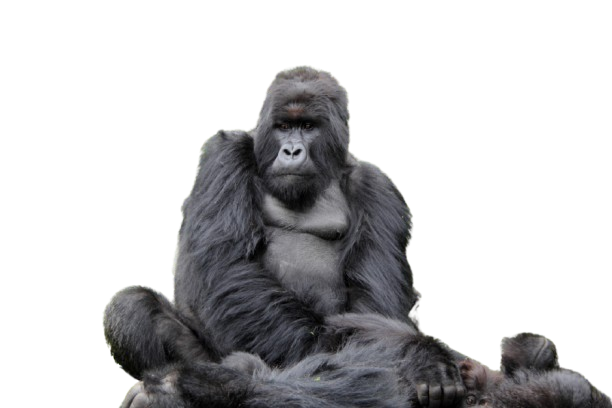
Mountain gorillas in Uganda - the pearl of Africa
About half of all the world’s 1063 mountain gorillas, all exist in Uganda and holidaymakers on Uganda gorilla safari can trek them in anyone of the country’s 2 parks; Bwindi Impenetrable National Park and Mgahinga Gorilla National Park. In Bwindi, there are about 459 mountain gorillas and 20 habituated families to explore in its 4 gorilla trekking regions (Rushaga, Nkuringo, Ruhija and Buhoma). In Mgahinga, only Nyakagezi family can be trekked starting from Ntebeko area.
All gorilla permits for Bwindi and Mgahinga National Park are obtainable at $800 if you are under visitor category of foreign non-residents, $700 foreign residents and shs. 300,000 East Africa Community citizens. These can easily be booked without you involving yourself in the strenuous process through a ground tour operator/company or contact reservation services of Uganda Wildlife Authority.
Bwindi and Mgahinga Gorilla National Parks are all in Southwestern Uganda. They can easily be reached by road about 8-9 hours’ drive from Kampala and 3-4 hours’ drive from Kigali Rwanda or by air from Entebbe International Airport or Kajjansi airfield Uganda to Kihihi or Kisoro airstrip.
Gorilla Trekking in Rwanda
Rwanda is another Africa’s most favorite gorilla destination. Tracking to see mountain gorillas in Rwanda is done only in Volcanoes National Park. The 160sq.kms protected area also forms part of the larger Virunga Conservation Area. It is Africa’s oldest park, created in 1925 and today, it hosts 13 habituated gorilla families.
Unlike Uganda and Congo, Rwanda is a luxury gorilla safari destination. Gorilla permits are sold at US Dollars 1500 per person and each permit offers holidaymakers a chance to track only one of the park’s habituated families. Rwanda gorilla permits can be booked by tourists on gorilla tour via a ground tour operator/company that is reputable, registered.
Volcanoes National Park Ruhengeri is in the Northwestern Rwanda and visitors can reach the park within just 2-3 hours’ drive from Kigali. Or cross from the Southwestern Uganda/Kisoro or Kabale through Chanika border or Katuna and this is about 3-4 hours’ drive.
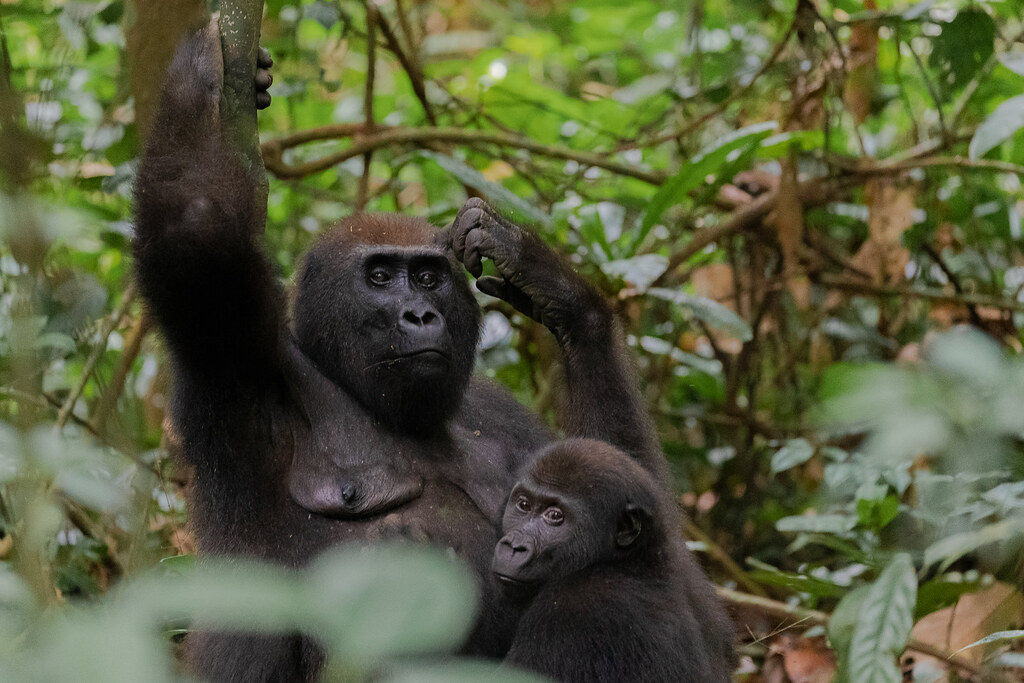
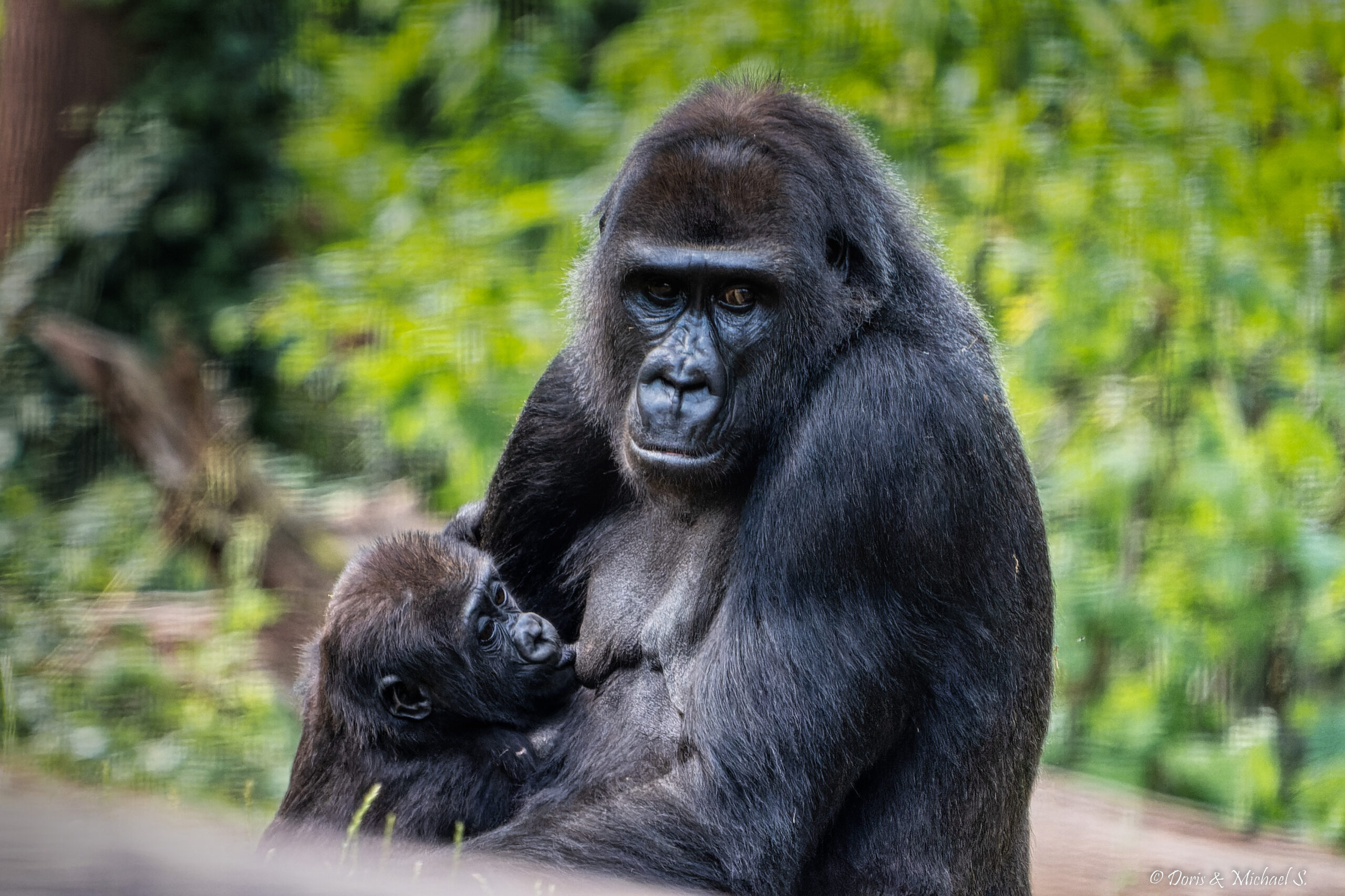
Mountain gorillas in Congo
Virunga National Park is the only place where mountain gorillas can be trekked by holidaymakers on Congo gorilla safari. It is the largest of all the mountain gorilla safari parks, occupying up to 7800sq.kms of land area. It is also a designated UNESCO Site and a host to an estimated number of 300 mountain gorillas. Presently, trekking mountain gorillas in the Virunga is done in any of its 8 habituated gorilla families with gorilla permits issued at US Dollars 450 per person.
Eastern Lowland gorillas
Interestingly, gorilla safaris in Congo don’t stop at visiting mountain gorillas alone but also you have a chance to see the Eastern Lowland gorillas (Gorilla beringei graueri) in the wild. This is also a sub-species of the Eastern Gorilla and Lowland Gorilla Trekking is conducted in Kahuzi-Biega National Park in any of its 5 groups already open for gorilla tourism. The closest lodging options to Kahuzi-Biega National Park include L’Orchids Safari Club, Coco Lodge, Exodus Bukavu Hotel and many more.
FAQ
Frequently Asked Gorilla trekking Questions
Planning to go gorilla trekking in Uganda, Rwanda or even the Democratic Republic of Congo? We have answered some of the popular and very important questions travelers always want to know prior to their gorilla tour in either of the countries.
The list of items to have on your Uganda, Rwanda and Congo gorilla safari is long but you must have essential ones. These include rain jacket, insect repellent, long-sleeved shirt, trousers, camera without flashlight, daypack, bottled drinking water, sun hat, gardening gloves, first aid kit, sunscreen, waterproof but lightweight hiking boots.
All gorilla safari parks in Uganda, Rwanda and Congo welcome all year round. But for gorilla trekking in particular, the dry season is the best period and it takes place from June-September and December-February. These are the peak months of the year and low season is characterized by heavy rains. The rainy months to mark on your calendar range from March to May and October to November.
How to Adopt a Gorilla – Sponsor and Donate to a mountain Gorilla in Uganda, Rwanda and DR. Congo
Wondering how you can adopt a gorilla? There are many ways that you can be part of gorilla conservation in Uganda, Rwanda and the Democratic Republic of the Congo (D.R.C). Gorillas are without doubt a few unique primate species on earth and more efforts are needed to ensure that they exist for future generations. One of the ways that you can involve in gorilla conservation and protection is adopting a gorilla.
There are 2 major gorilla species-the Eastern and Western gorilla. These are further split into 4 sub-species with the most sought for being mountain gorillas, eastern lowland gorillas-the sub-species of the Eastern gorilla; the Western gorilla is split into 2 sub-species-that is the Cross-River gorilla and Western Lowland gorilla.
Mountain gorillas are unique from the rest of sub-species of gorillas and remarkably, they only live in Uganda, Rwanda and D.R. Congo. The 3 countries are the only best places to visit for mountain gorilla trekking. However, D.R. Congo also offers lifetime Eastern Lowland gorilla trekking experiences in its lush Kahuzi-Biega National Park.
Population of gorillas
There are fewer than 250000 Western Lowland gorillas left on earth today and they range in the Central and West African forests. The Cross-river gorillas live in Cameroon and Nigeria and they are undoubtedly the most threatened sub-species of gorillas. Fewer than 300 Cross-river gorillas still survive in the wild today. Mountain gorillas are not more than 1063 today while Eastern lowland gorillas are fewer than 7000.
Adopting a gorilla as a tool for gorilla conservation
With mountain gorillas, cross river gorillas and eastern lowland gorillas listed as endangered species, there is need to ensure that they are well protected in the wild. They are highly threatened due to habitat loss, poaching, infectious human diseases and other factors. A number of organizations have come up to help protect gorillas and they include among others Gorilla Doctors, The Mountain Gorilla Conservation Fund, Dian Fossey Gorilla Fund International, International Gorilla Conservation Programme and Conservation through Public Health. All these organizations work together with local government authorities to ensure that the lives these endangered primate species are safe, secure and well-protected. They perform a number of activities including community sensitization, organizing gorilla censuses and research activities, providing veterinary services etc.
How do I adopt a gorilla
Here are some steps to follow if you are to adopt a gorilla;
- Choose the amount you would like to pay by direct debit every month. How much you choose to donate all depends on your wallet size and you can donate from 3 Pounds, 5 or 10 Pounds. Alternatively, you can make a one-off payment and there is an option of donating any amount starting from 36 Pounds.
- Fill in the adoption details-your name on the certificate and the start date.
- Enter your billing and delivery details
- Enter the payment details either by card or PayPal.
- Adoption pack often includes personalized certificate, fact sheet, animal story, glossy photo to display etc. Your donation plays an important part especially in meeting the costs of hiring staff, buying food for the case of orphaned gorillas in rehabilitation centers.
- You can adopt a gorilla a gift-this is where adoption certificate can be personalized with the name of your choice.
Impact of adopting a gorilla
- Campaign against the illegal trade in wildlife
- Monitor and survey the health of gorilla families in the respective destinations.
- Secure the survival of gorillas through greater protection.
- Facilitate the local outreach and education programmes to promote gorilla conservation.
What does a gorilla adoption include?
Adopt a gorilla to help protect these rare apes thrive for future. An exclusive adoption pack can be provided to you and it will contain all items such as soft toy, adoption pack (this includes animal story, personalized certificate, fact sheet and glossy photo to display), a copy of bi-annual adopt magazine with exclusive updates.
Why adopt a gorilla?
Adopting a gorilla is one way to help protect gorillas. Gorilla trekking plays a significant part in gorilla conservation but it isn’t enough. The cost of gorilla conservation is high and there are several things to be met including facilitating staff etc. When you adopt a gorilla, you have a chance to partner with organizations that are involved in conservation or protection of these endangered primate species.
Gorilla conservation can only be effective when individuals collaborate with the organizations to achieve the goal of eliminating poaching, illegal wildlife trafficking, habitat loss etc. Donating to various organizations such as Gorilla Doctors, Dian Fossey Foundation or Senkwekwe Centre means a lot as it helps to ensure that gorilla population remain high and that they are well protected. Your donations or sponsoring individual gorillas helps ensure that these apes get the best care they deserve.
The cost of Gorilla Trekking in Uganda and Rwanda – How much a safari to track gorillas costs, Price of Gorilla Permits and more Travel Guide
Wondering what the cost of gorilla trekking in Uganda, Rwanda or even Congo could be? The cost of gorilla tracking in Uganda & Rwanda varies depending on different factors. By putting into consideration those factors, it becomes easier to ascertain or establish the cost of gorilla trekking in Uganda and Rwanda.
Cost of Uganda gorilla trekking permits
To be in position to engage in gorilla trekking in Uganda and Rwanda, gorilla permits are a must have. Gorilla trekking permits in Uganda are purchased from Uganda Wildlife Authority at USD 800 for foreign non-residents, foreign residents USD700 and citizens from East Africa Community pay UGX300,000. Gorilla habituation permits cost USD1500 for foreign non-residents, USD1000 foreign residents and East Africa citizens UGX750000.
Rwanda gorilla trekking permits cost USD1500 per tourist and whether it is in Uganda or Rwanda where you plan to undertake a trek to see mountain gorillas, it is advisable to have your gorilla permits booked early 2-4 months before the date you plan to go gorilla trekking.
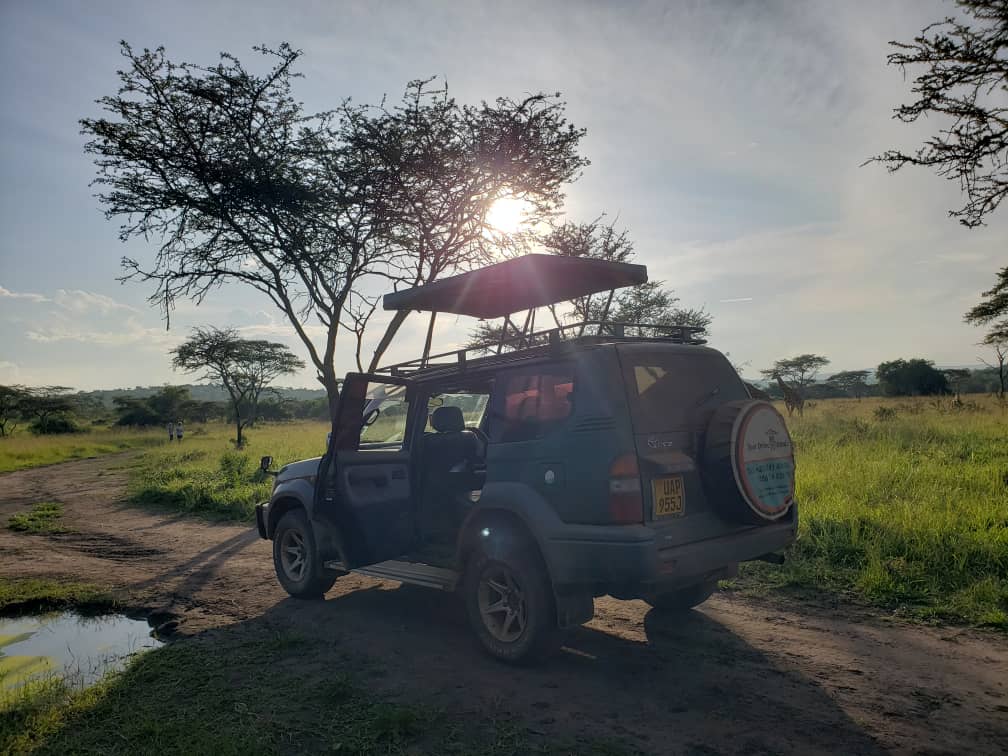
Let out Tourist Vehicle take you Gorilla Trekking to Bwindi
In order to travel to and from your destination- Bwindi Impenetrable National Park or Mgahinga Gorilla National Park, you need a 4×4 vehicle. Bwindi Impenetrable National Park alone has 4 sectors that tourists can easily access by road- they include Nkuringo, Ruhija, Rushaga and Buhoma. The prices of hiring vehicles differs depending on the tour operator, the small cars like 4×4 Toyota Rav4 can be rented at USD45 to USD60 per day, medium sized 4×4 vehicle at USD80-USD100 per day and Land Cruisers at USD200-USD300 per day. These rates are only for car hire excluding fuel.
Where to stay/Accommodation on a Gorilla trekking safari
Where to stay on your gorilla tour is important factor while you are on gorilla trekking in Uganda or Rwanda and there are different accommodation choices- budget, midrange and luxury. The cost of accommodation influences the cost of gorilla trekking in Uganda and Rwanda. The cost of budget accommodation option usually ranges from USD50-USD90 per night, mid-range from USD120-USD180 while luxury costs from USD500-USD900 and up-market accommodation from USD800-USD3000 per night.
The cost for accommodation are usually per room, per night on bed and full board (breakfast, lunch and dinner) basis. The other essential element to consider is porter fees which tourists have to consider when planning for gorilla trekking. Porters are usually hired to help carry luggage of visitors and you can hire one at USD10-USD20 per gorilla trek.
Our safari partners
Cost of Gorilla Trekking in Uganda
The cost of gorilla trekking in Uganda and Rwanda also varies depending on the days you plan to spend in the destination. Cost estimates for 3 days gorilla trekking differs depending on budget, mid-range and luxury. Budget gorilla trekking costs about USD1200 in Uganda and costs about USD2000 in Rwanda.
Midrange gorilla trekking costs about USD 1700 in Uganda and Rwanda gorilla trekking costs like USD2500. Luxury gorilla trekking in Uganda costs about USD2700 and in Rwanda you may need about USD3500. These cost estimates are for solo travelers on a private gorilla trekking safari and may change depending on how many people are in a group safari or private gorilla safari.
Best Places to see Gorillas in Africa – Where to Trek Gorillas, Habitats and Tracking Guide
Places to see gorillas in Africa are very few and this explains why these primates attract a huge number of tourists who come to have a glance at them. Its these rare primates that have let to the growth of tourism in Africa.
Gorilla trekking safaris have become every adventure travelers’ bucket list experience but where is the best place to see gorillas in Africa? This and many questions are often asked by visitors on plan to travel to Africa for gorilla trekking. Though you may have spotted gorillas in the zoos, gorilla encounter in the wild is amazingly what many have described as a priceless experience/encounter.
Trekking to see gorillas in Africa (Places to see gorillas in Africa) all involves visitors navigating through the dense rain-forest, steep slopes. All 2 species of gorillas exist in Africa; the Western and Eastern gorilla with the most sought for being sub-species of Eastern gorillas that is the mountain gorillas and Eastern lowland gorillas.
Uganda
Uganda also best referred to as the Pearl of Africa protects half of the remaining 1063 mountain gorillas on the planet earth. While on Uganda gorilla safaris, the best places to see gorillas include Bwindi Impenetrable National park and Mgahinga Gorilla National Park. These 2 splendid Uganda safari parks have 21 habituated gorilla families all open for visitors to track to see the massive and endangered mountain gorillas in the wild.
Bwindi and Mgahinga, Uganda’s two prominent gorilla habitats are all located in Southwestern Uganda 8-9 hours’ drive from Kampala. However, you can also take a flight from Entebbe Airport to Kihihi or Kisoro airstrips and this is the fast option to get to any of the two parks to trek to see mountain gorillas.
In Uganda, gorilla trekking permits are among the essentials if you are to be allowed to visit mountain gorillas. The permits for Bwindi or Mgahinga gorilla trekking are available for visitors to book at USD800 (Foreign Non-Residents), USD700 (Foreign Residents) & East African Citizen UGX 300,000. While in Uganda, there are 2 options to see mountain gorillas- visitors can engage in normal gorilla trekking or gorilla habituation experience (this is done only in Bwindi). Gorilla habituation involves visiting semi-habituated families and permits cost USD1500 but you enjoy 4 hours face to face with gorillas compared to 1 hour while on usual gorilla trek.
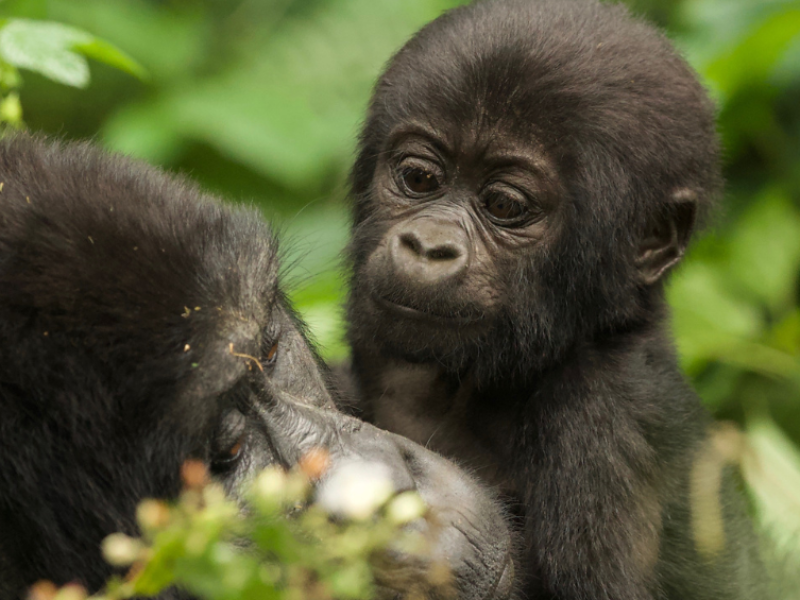
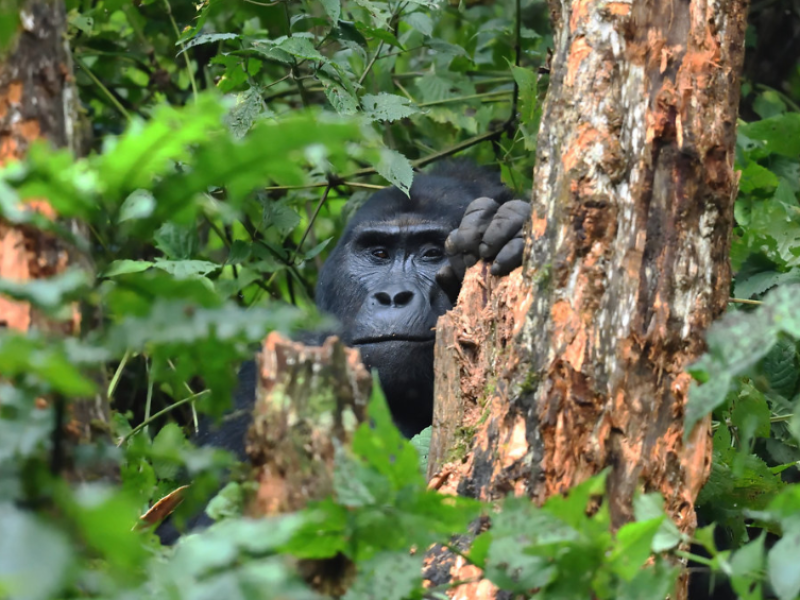
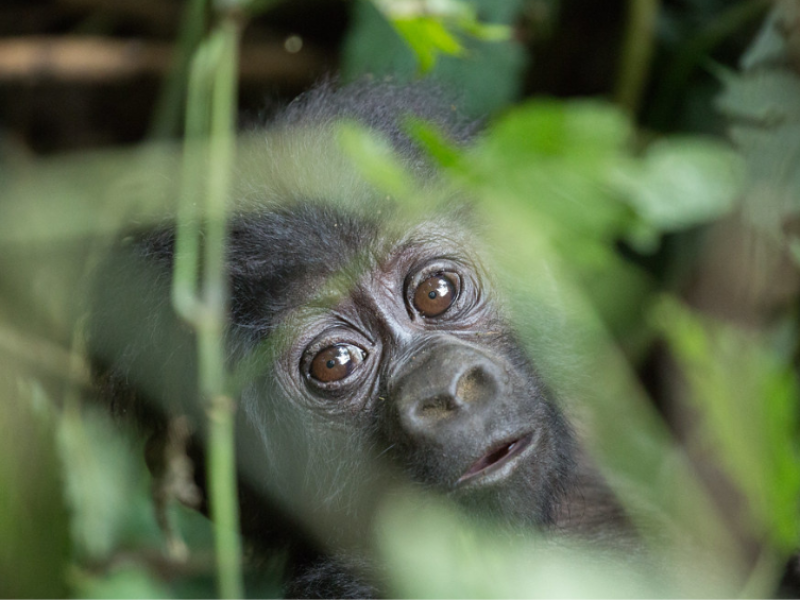
Rwanda
Rwanda is another special place in Africa that is worth visiting for you to see endangered mountain gorillas. In Rwanda, gorillas are only in Volcanoes National Park and this is part of the Virunga Volcanoes region. The park spans on 160sq.kms of land area making up Virunga Conservation Area in Northwestern Rwanda and has about 13 gorilla families open for gorilla trekking.
Unlike Uganda, in Rwanda gorilla trekking permits are availed to tourists on Rwanda gorilla safari at USD1500 per person. Rwanda permits for gorilla tracking can be booked via a reputable local tour operator or agency or make a direct booking through reservation team at Rwanda Development Board (RDB).
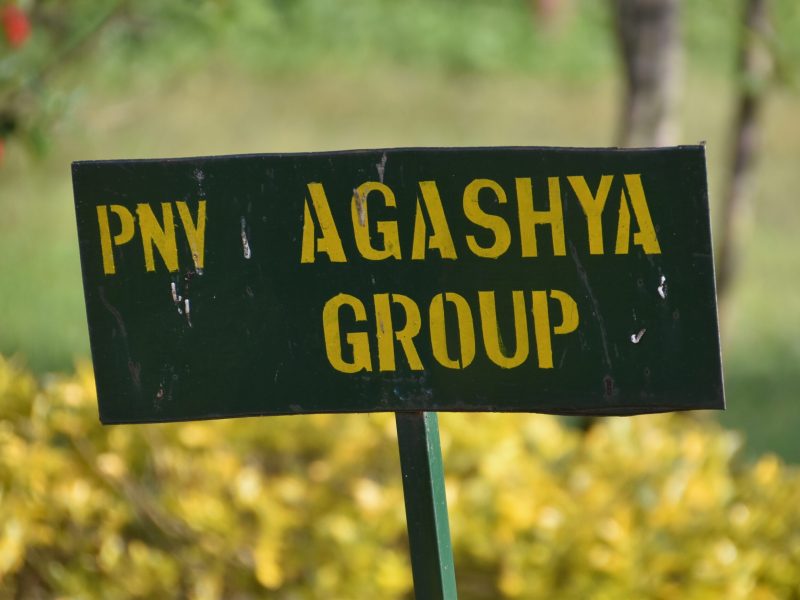
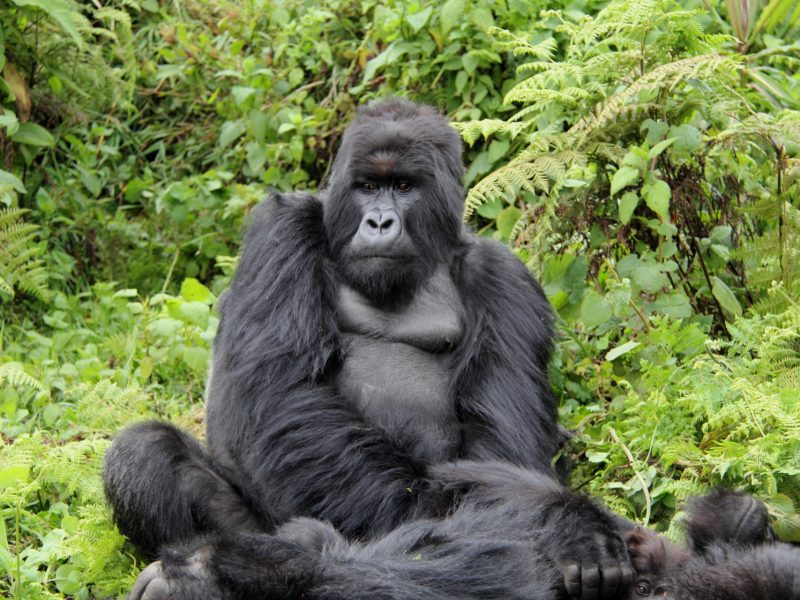
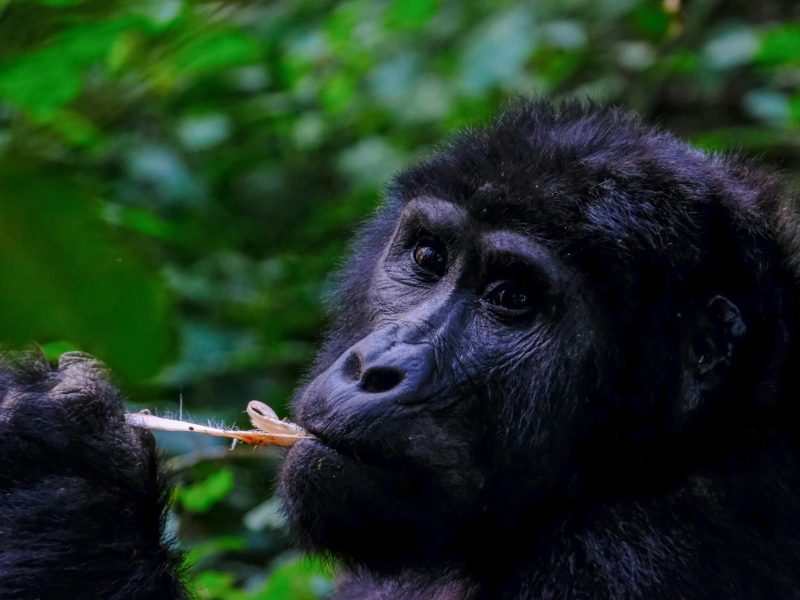
D.R. Congo
D.R. Congo is one of the least visited gorilla safari destination yet endowed with all two sub-species of gorillas that is mountain gorillas and Eastern lowland gorillas. Mountain gorilla safaris in Congo are enjoyable in Virunga National Park, Eastern part of the country and this is part of the extensive Virunga Conservation Area while lowland gorillas exist in Kahuzi-Biega National Park (currently open for lowland gorilla trekking), Maiko National Park plus other areas.
Whether you plan to see mountain gorillas or lowland gorillas in Congo, a valid gorilla permit is required. Each of Congo gorilla safari permits costs USD450 per person and you can book for one via a reliable tour operator or park authorities.
Other places to see gorillas in Africa include Congo Brazzaville particularly in its Odzala-Kokoua National Park, Nouabale-Ndoki National Park for western lowland gorillas; Central African Republic for Western lowland gorillas.
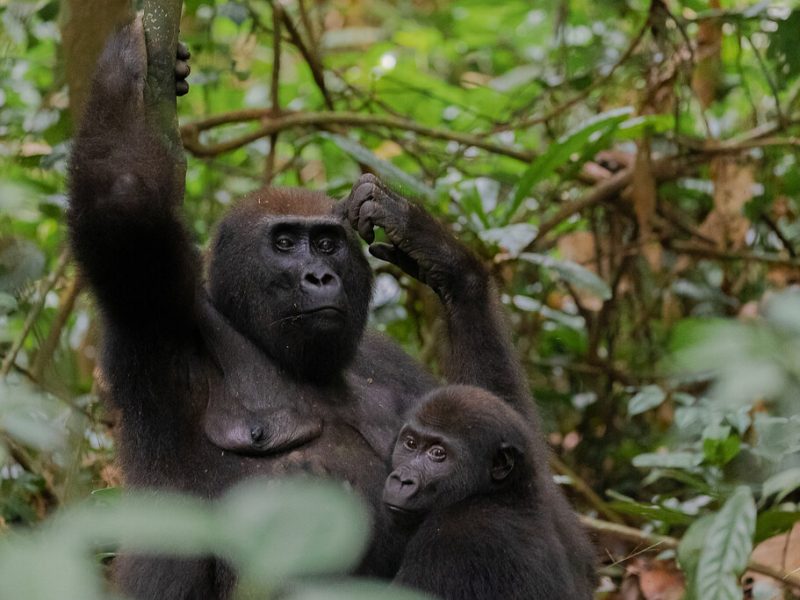
Virunga Gorillas – Information about Gorillas of Virunga National Park, Congo Gorilla Trekking Tour Guide, Facts, Gorilla trekking Guide, History, and Travel Tips
There are only about 1063 mountain gorillas left on this planet and of these, about 250 individuals stay within the Virunga jungles and these are one of the reasons why some travellers will beat all odds (such as visa acquisition challenges and instability challenges) to make trips to the Eastern side of Democratic Republic of Congo. For anyone who has read about this country will be aware that the country shelter two popular sub-species of gorillas (Eastern lowland gorillas and mountain gorillas), but the latter is trekked within the 780000-hectared Virunga National Park.
The spectacular Virunga National Park is in Eastern Democratic Republic of Congo with an area of about 3050 square miles comprising of humid montane rainforest, lowland closed forest, open savannah grassland, Swamp, Lava plains and Afro-alpine vegetation.
History about Virunga Gorillas
The existence of Virunga Gorillas dates back to over 22-32 million years ago when old fossil remains were found in the East African region, although were first discovered by Robert Von Beringe in 1902. He was a German Captain who first spotted them on Mount Sabyinyo and later christened as “Gorilla gorilla beringei by Matschie in 1903.
Carl Akeley (an American naturalist and Explorer) convinced then King of Belgium, Majesty Albert to Protect the area sheltering mountain gorillas and for this reason, Virunga National Park was created in 1925 as “Albert National Park after the King, officially making it the first Park in the African Continent.
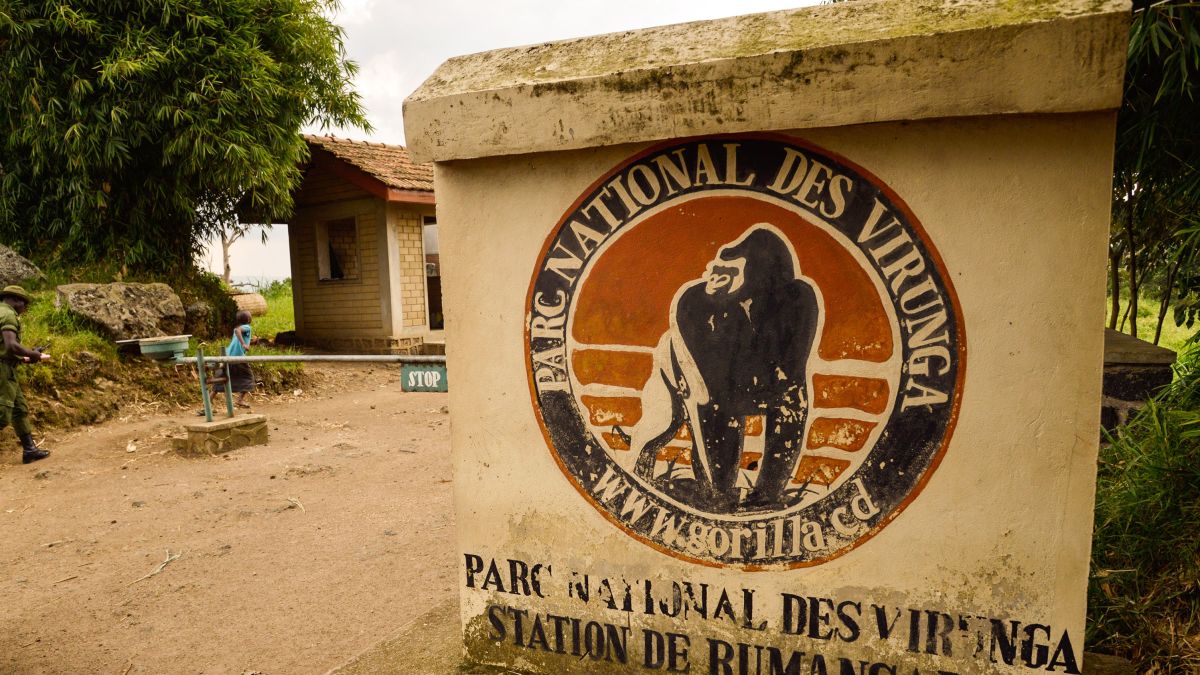
Gorilla Groups in Virunga National Park
A total of 8 habituated gorilla groups are found in Virunga National Park and only 64 visitors can trek these Great Apes each single day.
Kabirizi Group
Kabirizi Group consists of former members of Zunguruka Group headed by a wise silverback of the same name. Habituation of the group ended in 1994, within Bukima area. After the death of Zunguruka, the group was led by his Ndugutse until poachers also killed him in 1997. It was left under the leadership of Buhanga (Ndugutse’s son and Zunguruka’s grandson). The killers of Ndugutse were later found and sent to jail but one year later (in February) Buhanga was also killed during a fight with Kabirizi. This briefly left the group under the control of a Matriarch known as Nsekuye.
In the same year Munyaga (a solitary silverback) took over leadership but fights with Kabirizi still continued. It is during these fights that Kabirizi grabbed all females to form Kabirizi Group. He was however challenged by his son Bageni, taking over 21 members and there are about 24 members in Kabirizi.
Bageni Group
Having developed into a silverback in 2010, Bageni patiently waited until 2013 to challenge his father Kabirizi. He left with 21 members to establish his thrilling family.
It was later named after him. Subsequent clashes with his father gave Bageni the opportunity to take another female gorilla thus leaving only three adult females in Kabirizi.
During this numerous conquest attempts he attacked an unidentified gorilla group of 40 members still undergoing habituation and took two of its adult females.
There are now 36 members in Bageni group that includes 3 silverbacks.
Rugendo Gorilla Group
Like Zunguruka, Rugendo is one of the oldest gorilla groups in Virunga National Park and has been in existence since 1984. For a period of 14 years, this group grew from a size of 10 to 18 members prior to splitting into two, the break-away group formed by his son Humba. Following the tragic murder of Rugendo in 2001, leadership remained under his son called Senkwekwe. His leadership lasted only 6 years, following his murder with 5 other gorillas by poachers. It is from here that the Word’s first mountain gorilla orphanage was established and named after Senkwekwe. After years of conflicts and therefore not being monitored, it was discovered that Bukima had taken over the group.
Mapuwa Group
Named after silverback Mapuwa, a former member of Rugendo Group who left in 1995 with his brother Ruzirabwoba to live as solitary males. They took this bold step with hope of enjoying future benefits that include being leaders and it took the older of the brothers (Mapuwa) three years to finally become the head. After many confrontations from Lulengo group, he grabbed two more females to establish his family. He also fought Rugabo and Kwitonda families to expand the group by four members. He was overthrown by Mvuyekure, temporarily forcing him to exile but he later returned as a subordinate silverback and there are currently 24 members with two silverbacks.
Lulengo Group
Before being known as Lulengo, this group was originally referred as Rugabo and is widely known for its painful past in the hands of poachers. In 1994 the dominant silverback together with 2 adult females were savagely killed when an infant gorilla was being kidnapped. On the positive note, the group gained more members in 1998 after a confrontation with Mapuwa group then received an emigrating female in 2014 after a clash. There are now 11 members in the group.
Munyanga Group
Official habituation of this group was finalized in 1998 and this led to the reduction on attacks by poachers, although it was already known to researchers owing to the regular interactions with Buhanga whereby a number of members were received here. However, the numerous fights with other groups also cost the lives of its members, dropping to 6 individuals from 12 between 1998 and 2002. The dominant silverback of the group mysteriously disappeared between 2007 and 2008 leaving Mawazo as the leader.
Humba Gorilla Group
This group came into existence from the many fights between Rugendo and his son Humba, making the latter to leave together with his younger brother Nyakamwe. From the time of formation in 1998 to 2009, the number had grown to 17 members but internal conflicts between the two brothers led to the split of this group. Nyakamwe ended up taking more members thus Humba retained only 6 members. Their number increased in 2014, resulting from the clash with Munyanga.
Nyakamwe Gorilla Group
This group was named after the founding silverback (Nyakamwe) who has earlier left his natal group Rugendo, together with his brother and later got disagreement thus separation. It was formed in 2014 when he left with over 10 members leaving his brother Humba with only 6 members. Clashes with Kabirizi led to the addition into the group (adult female) and presently there are 14 members after several births and sadly deaths.
Characteristics of Virunga Gorillas
Virunga Gorillas (Mountain gorillas) are sub-species of Eastern gorillas, known for their muscular arms, broad chests as well as big hands and feet. Gorilla beringei beriengei (as they are often referred) have thicker, darker and longer hair to provide insulation from extreme coldness in their natural habitat. Their natural environment comprise of bamboo forest, dense tropical rainforest, mixed forests as well as the sub-alpine grassland on the Volcanic peaks.
Virunga Gorillas occupy areas ranging from 2500 to 4000 meters above sea level, with dense forest and cold temperatures. Their gestation period is 8.5 months, after which a single baby weighing about 1.8-2 kilograms is born. Nonetheless, there are some cases of twins among Virunga Gorillas.
Virunga Gorillas weigh between 300 and 450 pounds, with standing height of four to six feet tall. This however makes their smaller compared to their lowland cousins. When it comes to diet, Virunga Gorillas are herbivores that eat succulent leaves, bamboo shoots, stems and fruits of different plant species.
The gorillas in Virunga National Park have gestation period of 8.5 months, like it is in human beings.
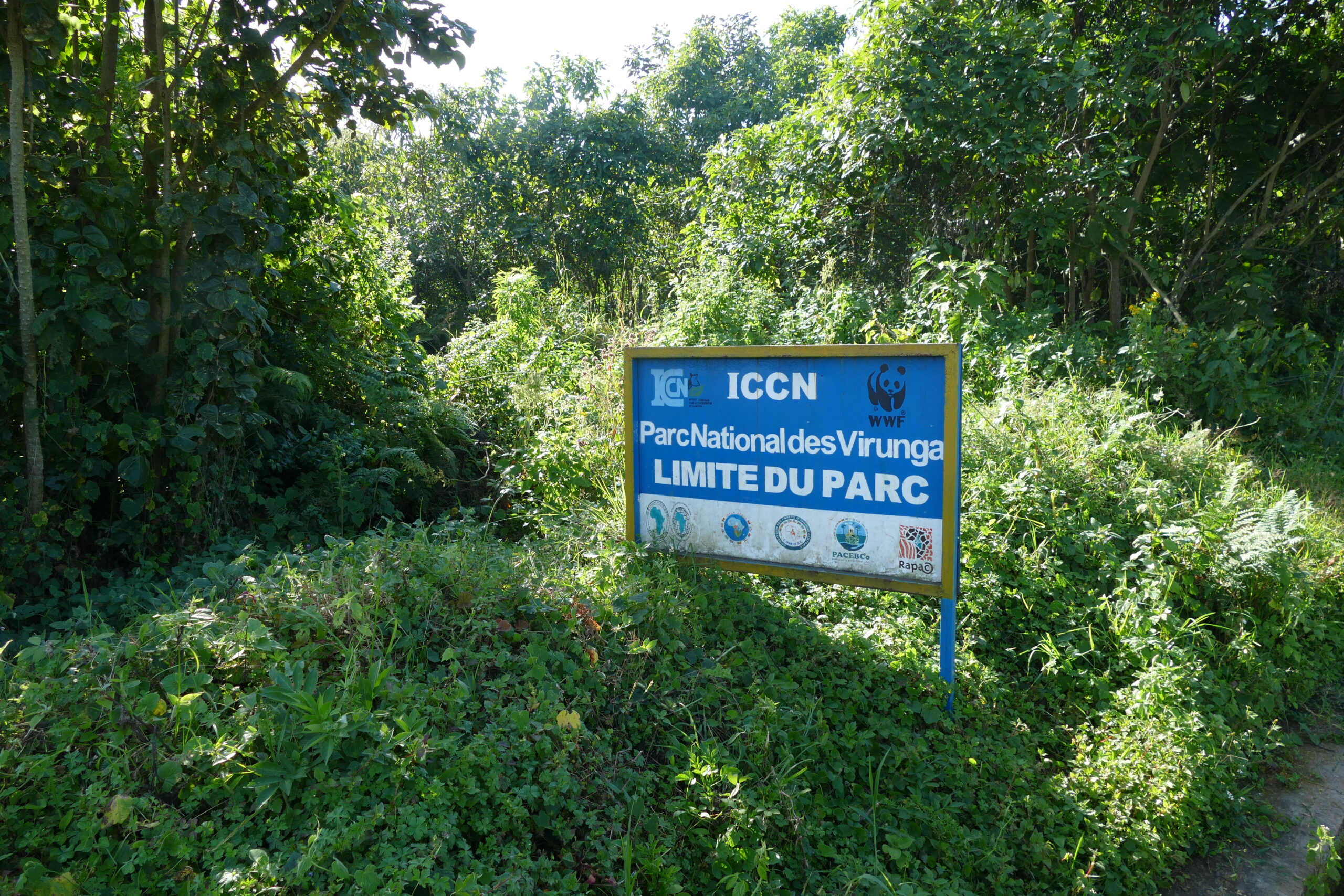
Gorilla Trekking in Virunga National Park
Gorilla trekking in Virunga National Park is led by armed Ranger guides and trackers who are also in charge of daily monitoring of the Protected Area’s 8 habituated gorilla groups. Excursions normally begin at Bukima Ranger Post at 8:00am and require 1-3 hours of walking/hiking each way and this depends on the actual location of the group being trekked, nature of terrain, weather condition and level of difficulty of the landscape. Before travellers begin hiking through the forest, they are first taken through a mandatory briefing for 30-45 minutes.
Best time to go gorilla trekking within Virunga National Park
June to September and December to February is the perfect time to go gorilla trekking within Virunga National Park because during this time, the rainfall level has reduced which makes it less challenging to walk through the forest searching for mountain gorillas. However truth be told, Virunga jungle can be explored throughout the year. Months of March to May and October to November are the rainiest which make forest trails muddy and slippery hence more challenging to hike and search for the mountain gorillas. However, it’s not all negative about gorilla trekking in the rainy season because on the positive note, gorilla treks are shorter, owing to the fact that the giant Apes have plenty of food thus will not move deeper into the jungle.
Where to stay in Virunga National Park before/after gorilla trekking
Mikeno Lodge is the main place of lodging in Virunga National Park before/after gorilla trekking. This luxury accommodation facility came into existence in August 2011 and has 12 private and individual Bungalows. Each of these Bungalows features double or twin beds, is of beautiful style with Lava Rock walls as well as thatched roofs. An airy bathroom, private deck and lounge area around a fireplace are enjoyed in each of the Bungalows.
Ngila Lodge
This is another luxurious Tented Lodge in Virunga National Park and boasts breathtaking views of the Virunga Volcanoes. This accommodation facility largely overlooks the jaw-dropping views of at least 6 Volcanoes that include Nyiragongo, Gahinga, Bisoke, Karisimbi, Muhabura and Mikeno. Guests stay in luxurious Safari Tents that sit on raised platforms with en-suite bathroom, large beds and private balconies. The main building area has Wi-Fi, well-stocked Bar and Lounge and dining area among others.
Other fantastic places to stay in Virunga National Park before/after gorilla trekking include Bukima Tented Camp, Nyiragongo Summit Shelters, Tchegera Island Tented Camp, Kibumba Tented Camp and Lulimbi Tented Camp among others.
Gorilla Trekking in Virunga
FAQ
No more than 8 visitors are allowed to track or be around a habituated group/family of mountain gorillas. This is done to avoid stressing the Giant Apes as they go about their daily routines in their natural habitat.
Fifteen (15) and up is the recommended age for gorilla trekking in Virunga National Park. While seeing mountain gorillas in their natural habitats is a phenomenally thrilling experience for every traveller to the Democratic Republic of Congo, there is a limit on who visits the Great Apes. Children are generally unpredictable thus might start throwing tantrums in the middle of the trek or likely to begin screaming on seeing the gorillas. Also, gorilla trekking is generally physically demanding thus becoming difficult for young children to catch up with the pace in searching for them.
Permits for Virunga National Park cost only $400 per person, making this Safari destination the cheapest mountain gorilla trekking destination. However, if you are trekking the Giant Apes in the low season (March, April, May, October and November), you will be charged only $200 to trek these endangered primates in Virunga.
Having understood the cost of gorilla permits, it is also important to know how to obtain them. A gorilla permit is simply a document that allows you to enter the jungles in search of Giant Apes in their natural habitats. This special document can be secured directly from the Park Headquarters and Virunga offices at Grande Barriere Border crossing or indirectly via a trusted Tour Operator. Even for this remote and secluded Eastern side of the Democratic Republic of Congo where this Protected Area is found, visitors are recommended to book for permits at least 3-4 months in advance.
Did you know that it is possible and safe to film the mountain gorillas in Virunga National Park? However before being allowed to undertake this life-changing adventure (filming), visitors are required to first process their filming permits as well as gorilla permits for all the crew members in addition to seeking permission from local Authorities within the country.
For the gorilla filming permits for Virunga National Park, they have to be cleared with the Customs office at any official entry point. Additionally, your filming crew members will also be required to process/possess valid Visas as well as work permit prior to being allowed access into the beautiful Democratic Republic of Congo.
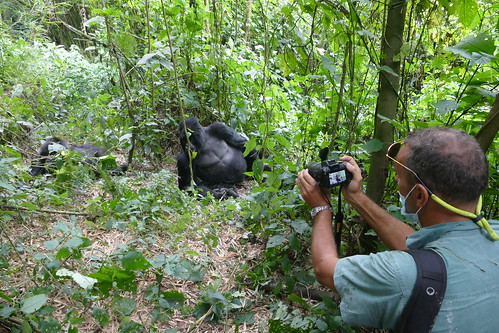
3 Amazing facts about Virunga Gorillas
One of the amazing and mind-boggling things about Virunga Gorillas is that they share 98.4% of their DNA with humans. This is interesting and heart-warming to hear but also detrimental because it makes them susceptible to a lot of human diseases. Because of this, we have to always protect them by trekking in good health (free from communicable diseases), following guidelines issued by local Authorities, to mention but a few.
Virunga Gorillas are generally herbivores, meaning they don’t eat any kind of meat but rather savor on fruits, leaves, stems, pith, roots and shoots.
These gorillas only live in the densely forested and mountainous areas hence are known as “mountain gorillas
How to book a gorilla safari to Virunga
For travellers looking for a more affordable option of undertaking a safari to Virunga, consider booking it on your own-buy permits, book transport, meals and accommodation. However if you have decided to use the services of a tour operator, select a list of them. Send a “contact us” inquiry specifying what you need. You will receive a reply with final cost of activity, after which you can confirm your gorilla safari with the Company offering best rates and good services.
In Conclusion, the Virunga Gorillas are one of the top reasons for visiting the Democratic Republic of Congo where visitors get the chance to learn about history of these Giant Apes and their conservation, the different gorilla groups, characteristics of the gorillas, how gorilla trekking adventures are undertaken, the best time to enjoy this adventure, where to stay after trekking Virunga Gorillas, the age limit of encountering the Great Apes, cost and how to obtain gorilla permits of Virunga National Park, about gorilla filming and how to book a gorilla safari to the iconic destination.
Volcanoes Gorillas – Information about Mountain Gorillas of Volcanoes National Park Rwanda, Facts, Gorilla trekking Guide, History and Travel Tips
Volcanoes gorillas have made a huge comeback after almost being driven to extinction by poaching, illegal bush meat sale and habitat encroachment. The only species of gorillas in Volcanoes National Park are the mountain gorillas, which mainly occupy the dense montane forests within mountainous regions of East-Central Africa. Volcanoes gorillas are interestingly the prime attraction within Rwanda’s Northern Province.
Volcanoes gorillas are sub-species of the Eastern gorillas and live within the slopes of Virunga Mountains, an extensive range of varying extinct Volcanoes that extend across the borders of Uganda, Democratic Republic of Congo and Rwanda. The other phenomenal category of mountain gorillas is found within Uganda’s Bwindi National Park and adjacent Sarambwe Forest Reserve in Democratic Republic of Congo.
History of Volcanoes Gorillas
For more than a century ago, Volcanoes gorillas had a silent history, with many groups of people working hand in hand to ensure that they remain existent within the dense jungles of East-Central Africa.
These Giant Apes were reportedly discovered in 1902 when Captain Freidrich Robert Von Beringe-a German Army Officer and European Explorer first observed them on the lower slopes of Mount Sabyinyo. Interestingly, the mountain gorillas were named in honor of this outstanding German Captain. He together with other enthusiastic Conservationists such as Dr. Engeland and Corporal Ehrhardt as well as 20 other Park Rangers and porters from surrounding local communities embarked on a mission from Usumbura on the 19th of August 1902 to pay a courtesy visit to the Sultan Msinga of Rwanda as well as continue north to the range of Virunga Volcanoes.
The main mission of this journey of discovery was to first reach out to the German outposts within former German East Africa so as to remain in touch with the local chiefs in addition to ensuring good relations. This was done while nourishing the influence as well as power of the German Government within these places. On getting to the Virunga Volcanoes, they made an effort to hike Sabyinyo Volcano and after 4.5 hours of hiking they reached an altitude of 3100 meters above sea level, walked through the Bamboo forest, several elephant trails and set camp at 3100 meters above sea level. While on the hike, they noticed a huge human-like male primate weighing about 90 kilograms, hairless chest, big-sized hands and feet. Given the intimidating size, they managed to kill two of these creatures and lifted them with ropes.
Sadly, they couldn’t ascertain whether it was a gorilla or chimpanzee, given the fact that these Giant Apes had not been discovered within the area. When descending and returning back to the base of mount Sabyinyo, the samples of the skin and limbs of the animal that Captain Freidrich Robert Von Beringe had earlier collected were stolen by a spotted hyena, then the remainder was taken to a Museum in Berlin. It is from these studies that another scientist-Dr. Matschi described them as sub-specie of gorillas, thus naming them “gorilla beringei beriengei” after Captain Freidrich Robert Von Beringe.
However since then, these creatures have gone through years of civil war, encroachment of their natural habitat, hunting/poaching as well as diseases that have tremendous threatened their population. Due to this, these gorillas were once believed to getting extinct by the end of the 20th Century.
Carl Akeley, an American Naturalist persuaded then King of Belgium-His Majesty Albert to create a National Park that would be fundamental in the conservation of Mountain gorillas. For this move, Albert National Park was created in 1925, making it one of the oldest Parks in the African Continent. First studies of mountain gorillas in then Albert National Park were done in 1959 and the first book published of these creatures was titled “The Mountain Gorilla: Ecology and Behavior” published in 1963. With support from Louis Leakey and National Geographic Society, Dian Fossey (an American primatologist) embarked on a ground-breaking field study on the mountain gorillas (critically endangered at the time) within the Virunga Ranges. She was active in getting rid of mountain gorillas’ public acumen as beasts by clearly demonstrating the deep intimacy as well as social intelligence noticeable among Giant Apes as well as how closely their riveting behavior are similar to that of human beings.
The turning point of Gorilla Conservation history in Volcanoes National Park was the “Mountain Gorilla Project of 1979” with a convention between Government of Rwanda as well as Consortium, leading to the formation of different private Organizations (such as WWF, AWLF and FFPS) working towards Nature Conservation. Two gorilla families close to Karisoke base were introduced to habituation process.
However, Dian Fossey was assassinated on 27th December 1987 in her Cabin and until today, mystery of her death still remains unknown. He was laid to rest close to Digit, one of her favorite gorillas but her legacy still lives on with the Dian Fossey Fund.
Gorilla Groups in Volcanoes National Park
A total of 12 gorilla groups have been habituated for trekking in Volcanoes National Park and these occupy different areas of the 160-square kilometer Protected Area within the north-west of Rwanda. These groups include:
Sabyinyo Gorilla Group
This Group ranges around the slopes of Mount Sabyinyo, hence the reason it was named Sabyinyo. It is considered one of the easiest-to-trek groups in Rwanda because it is close to Kinigi Park Headquarters. There are about 13 members in this group.
Karisimbi (Susa B) Gorilla Group
This gorilla group was named after the highest Virunga Mountain (Mount Karisimbi) and is also referred as Susa B, owing to the fact that it broke off from the original Susa Gorilla Group. There are about 16 individuals in the group, two of which are silverbacks and requires strenuous hikes to get there.
Agashya Gorilla Family
The word Agashya means “new one” in the Kinyarwanda dialect and the group is also referred as “Group 13” because it had 13 members at the time of habituation. There are now over 27 members in this group living within the lower slopes of Mount Sabyinyo, along with Sabyinyo Gorilla Group.
Susa (or Susa A) Gorilla Group
Susa A was one of the gorilla groups studied by Dian Fossey during her Gorilla Research/studies and has over 42 members during habituation. It is mainly found within the higher slopes of Virunga Mountains hence visitors have to be prepared for challenging hikes to find its members.
Hirwa
Hirwa means “lucky one” in the local Kinyarwanda dialect, while the group was founded by a brave silverback known as “Munyinya”, who left his natal group (Susa A) with several adult females and other members. There were about 16 members at the time of establishment/ habituation in 2006 but after several years, the group received a set of twins thus making it one of the most cherished gorilla families.
Amahoro
Amahoro is a Kinyarwanda word meaning “peaceful”, owing to the peaceful nature of group member. The 18-member group is led by “Ubumwe” meaning “togetherness” and occupies the rugged slopes of Mount Karisimbi (highest of the 8 Virunga Volcanoes) making it Challenging to locate hence ideal for the adventurous visitors only.
Titus group
Titus is one of the oldest gorilla groups in Volcanoes National Park and was one of Dian Fossey’s research groups. It was formed and named after Titus, a young blackback that all his family members to poaching but slowly and with time formed another gorilla group.
Bwenge
Bwenge means “wisdom” in the local Kinyarwanda dialect and is the name of the dominant silverback that also formed the group. He is believed to be one of the wisest silverbacks in Volcanoes National Park, and the group was formed in 2007. There are 11 members in this group, ranging along the slopes of Mount Bisoke thus making it one of the easiest-to-trek groups in Rwanda.
Kwitonda Group
Kwitonda means “humble” and is the name of the Silverback gorilla that led the group from Virunga National Park. into Volcanoes National Park in 2003. Given the fact that they are always on the move, the group is one of the most challenging to trek and its members usually live at elevations of 2300 to 4500 meters above sea level.
Muhoza Family
Being one of the newest habituated gorilla groups in Volcanoes National Park, Muhoza group was opened for trekking on 3rd December 2016 with only 7 individuals. It was established under the leadership of Muhoza, who later ambushed Hirwa Group, taking along two of its members thus increasing their number to 9 members.
Umubano gorilla group
Umubano means “togetherness” in the Kinyarwanda dialect because this group lives in close proximity with Amahoro group, with minimal fights recorded. This group was formed as a result of rivalry between two strong silverbacks in Amahoro (Charles and Ubumwe) hence breaking away to form Umubano group.
Ugenda gorilla Family
One of the 12 gorilla groups in Volcanoes National Park was named Ugenda for the “wanderer” behavior of its members, because they are always on the move and range around the slopes of Mount Karisimbi and sometimes head towards mount Bisoke.
Characteristics of Volcanoes Gorillas
First, Volcanoes gorillas share about 98.2% of their DNA with humans, and this makes them susceptible to several communicable diseases such cough, flue, measles and many others.
Volcanoes gorillas are sociable creatures that live in groups of five to thirty members, and led by a huge dominant silverback. These groups can be referred as families or troops with adult females, sub-adult females, blackbacks and infants. Adult males are known as “silverbacks” because of their silver-gray saddles.
The gestation period of Volcanoes gorillas is 8.5 months, whereby females give birth to one offspring at an interval of 3-4 years. This therefore means that they bear 2-6 offsprings in an entire lifetime. Reproduction of female gorillas begins by age 10 while for males at age 13.
Volcanoes gorillas are notable for weighing from 135 to 200 kilograms and extend at a height of four to six feet. Their diet is mainly herbivorous, comprising of succulent leaves, bamboo shoots, wild celery, tree barks, fresh fruits, stems and many others.
The Mountain gorillas in Volcanoes National Park are characterized by muscular arms, wide feet and hands as well as broad chests. Generally, their fore limbs are longer than the hind limbs to carry their massive weight.
Volcanoes gorillas have thicker and longer hair for insulation against the cold temperatures within their natural habitats.
Gorilla Trekking in Volcanoes National Park Rwanda
The unforgettable chance to trek and see endangered mountain gorillas in the wild is unrivaled, some visitors even saying it is life-changing. Face to face encounters with the Giant Apes as they go about doing their daily routines in the wild is properly undertaken with professional trackers and Ranger guides who take small groups of visitors upwards the slopes blanketed with bamboo vegetation to spend marvelous and jaw-dropping hour, just 7 meters away from these gentle beasts.
A total of eight gorilla permits are issued for each of the 12 habituated gorilla groups, thus your face to face encounter with the mountain gorillas is as private and interrupted as possible. With limited gorilla permits (96 in number) issued each single day for Volcanoes National Park, travelers are advised to book for gorilla safaris in advance. Tourists converge at the Park Headquarters in Kinigi by 7:00am and this is followed by allocation into gorilla families on the trekking day and this is based on levels of physical fitness, age and individual interests in addition to briefing on the rules and regulations for trekking and observing the endangered mountain gorillas.
Guided treks head to different places in the jungle, lasting 30 minutes to three hours or more, until elevations of 2500 to 4000 meters above sea level. One hour is allowed for observation and photography after making contact with the allocated gorilla group.
Best time to go gorilla trekking in Volcanoes National Park
Gorilla trekking tours in Rwanda’s Volcanoes National Park are done throughout the year. Nonetheless, the best time to achieve maximum experiences from gorilla trekking in Volcanoes National Park is the dry season-running from June to September as well as December through February when rains are minimal or absent, and trails aren’t muddy or slippery thus perfect conditions for moving through the jungle to search for the mountain gorillas.
Where to stay in Volcanoes National Park after gorilla trekking
Volcanoes National Park boasts of numerous and outstanding places to stay after or before undertaking gorilla trekking tours and they include Muhabura Hotel, Faraja Hotel, Five Volcanoes Boutique Hotel, Garr Hotel, Bisate Lodge, Da Vinci Gorilla Lodge, Virunga Lodge, Sabyinyo Silverback Lodge, Villa Gorilla, Gorilla Solution Lodge, Mountain Gorilla View Lodge, Le Bambou Gorilla Lodge, Garden Place Hotel, One & Only Gorilla’s Nest, Singita Kwitonda Lodge, Kinigi Guesthouse, Bishop’s House, Le Palme Hotel, Best View Hotel, Gorillas Volcanoes Hotel and many others.
How many visitors are allowed to trek mountain gorillas in Volcanoes National Park?
For travelers still wondering about the number of visitors allowed to trek mountain gorillas within Volcanoes National Park, the number is 8 visitors per group each day. This is usually done to reduce any possible behavioral changes to the mountain gorillas, owing to the fact that huge crowds stress or make them uncomfortable. This is also done to reduce possible risks of exposure to diseases and this is mainly attributed to the fact that Giant Apes share 98.2% of their DNA with humans. Numbers are also limited to minimize damage to the natural rain forest.
The age limit for mountain gorilla trekking within Volcanoes National Park
The minimum age for mountain gorilla trekking within Volcanoes National Park is 15 years and this is implemented because of the hilly/mountainous as well as rugged terrains hence making it challenging for children and this in the end delays gorilla trekking adventures. Also, young children’s reaction towards mountain gorillas charging is unpredictable thus to avoid any negative reactions, the minimum age is 15 years.
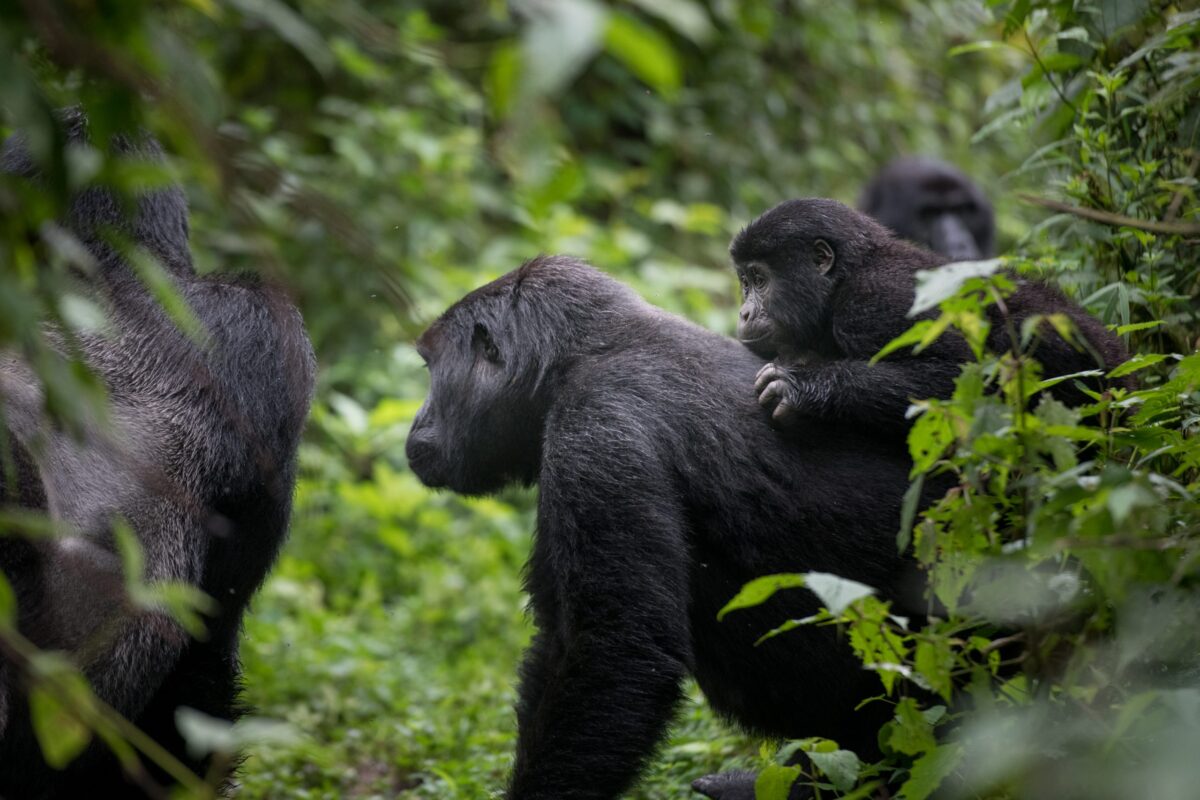
Gorilla trekking permits for Rwanda’s Volcanoes National Park
Gorilla trekking permits that allow visitors to trek mountain gorillas in Volcanoes National Park cost only $1500 per person per trek for one hour encounter with a habituated gorilla group. These gorilla permit fees are only paid to Rwanda Development Board, although permits can be acquired through trusted Tour Operators. This country offers discounts (30%) for travelers that spend 3 days exploring Akagera and Nyungwe Forest National parks in addition to gorilla trekking hence will pay only $1050 per person per trek. These permits are only issued to visitors that are 15 years and above, those with basic physical fitness and to avoid disappointments, booking has to be at least 3-4 months before the planned trekking say.
- How are volcanoes gorilla permits obtained?
- Mountain Gorilla filming within Volcanoes National Park
- The 3 amazing facts about Volcanoes gorillas
- How to book gorilla trekking safaris to Volcanoes National Park
Volcanoes gorilla permits are obtainable directly through Rwanda Development Board (via email -reservation@rwandatourism.com and telephone- +252 576514. This process is more stressful and cumbersome yet cost effective. Alternatively, you can book indirectly through a trusted and credible Tour Operator, considered less stressful hence preferred by most travelers to Rwanda but you will be required to pay commission to cover administrative costs.
While gorilla trekking allows one hour of interaction with the Giant Apes in their natural environment, filming is also possible. While searching for mountain gorillas in the jungle, it is also possible to film the Great Apes and produce Television documentaries/films such as “Gorillas in the Mist”. First, it should be noted that gorilla filming and photography permits cost only $5000, plus an additional $2000 for security (but will be refunded at the end of the gorilla filming trip). Don’t forget to buy gorilla permits for the entire filming crew thus 8 permits will be required for a maximum of 8 visitors.
Media accreditation is also required for filming in Volcanoes National Park and costs only $30 for 15 days’ filming or $50 for one month filming.
Donec vitae sapien ut libero venenatis faucibus. Nullam quis ante. Etiam sit amet orci eget eros faucibus tincidunt. Duis leo. Sed fringilla mauris sit amet nibh. Donec sodales sagittis magna. Sed consequat, leo eget bibendum sodales, augue velit cursus nunc,
Volcanoes gorillas are one of the largest, heaviest and strongest living primates with an average male weighing 200 kilograms and having a standing height of four to six feet tall.
Volcanoes gorillas interestingly spend almost a quarter of their day foraging on bamboo shoots, leaves and stems although will sometimes be found eating snails, ants and tree barks.
Another riveting fact about Volcanoes gorillas is that they have over 16 kinds of calls in form of short barks (used in terms of curiosity), chest beating, hooting, strutting with stiff legs (to scare away rivals) and roars.
Gorilla trekking safaris to Volcanoes National Park are booked in two ways-individually by travelers who have to organize everything from gorilla permits, transportation from the Airport/City to and from the Park, meals as well as accommodation for the nights spent in the gorilla trekking destination. This is undeniably challenging and stressful, hence the reason travelers opt for the second option, which is entrusting the booking process to a credible Tour Operator who will plan for all the aspects of the trip.
Conclusively, Volcanoes gorillas are the premier reason why thousands of travelers make trips to remarkable and beautiful Rwanda but it would be more meaningful when you already understand the history of volcanoes gorillas, the different trekkable gorilla groups, interesting characteristics of the Giant Apes, how gorilla trekking tours are undertaken in Volcanoes National Park, the perfect time to undertake these adventures, where to lodge during the gorilla trip, maximum number of people allowed to trek Rwanda’s habituated families, the age limit for the gorilla treks in Volcanoes, how gorilla trekking permits for Volcanoes are obtained and how much they cost, the process of gorilla filming within Volcanoes National Park and how gorilla safaris to Volcanoes can be booked.
Bwindi Gorillas – Information about Mountain Gorillas of Bwindi Impenetrable National Park, Facts, Gorilla trekking Guide, History and Travel Tips
Bwindi Gorillas are the main drawing factor for visitors to the south-western part of Uganda and are the iconic animals of the montane rainforests of East and Central Africa. As the wildebeest migration are to Kenya and Tanzania, mountain gorilla trekking is to Uganda.
Latest Projects
History about Bwindi Gorillas
Bwindi Gorillas date back to 25,000 years (the same existence of Bwindi Impenetrable Forest) and lived a quiet but troubled life (resulting from poaching, habitat loss and diseases) until early 1990s when the Park was eventually gazetted as well as gorilla tourism developed. From the late-1970s to early 1980s, Uganda was still suffering tremendous effects of civil wars as well as political instabilities, to the point that the mountain Bwindi gorillas were killed for bush meat while their habitats were used hiding places for rebels.
However in 1986 after the National Resistance Army (under Yoweri Kaguta Museveni) took over power, peace was slowly restored which later resulted into establishment of Bwindi Impenetrable National Park among other gazetted Protected Areas. The first gorilla group to be habituated in the Park was Mubare (in 1994), followed by Habinyanja and Nkuringo Groups among others.
Gorilla Groups in Bwindi Impenetrable National Park
There are presently over 21 habituated and semi-habituated Bwindi Gorillas, that exist in four trekking regions/sectors that include Buhoma, Ruhija, Nkuringo and Rushaga.
Buhoma & Gorilla trekking Sector
- Mubare Gorilla Group
- Habinyanja Gorilla Group
- Rushegura Gorilla Group
- Katwe Gorilla Group
- Muyambi Gorilla Family
Known for being the first habituated gorilla group in the sector, Bwindi Impenetrable National Park and Uganda in general, Mubare was named after the stunning Hills of Mubare where the group was first found. It first received its visitors in 1994 and now has 9 members that include one silverback.
This was the second gorilla group to be opened for trekking in 1999 and derived its name from “Nyanja” to mean water body, because it was first sighted close to a swamp. It is presently made up of 17 members that include one silverback, one blackback, five alpha females, four juveniles and six infants.
Rushegura is the breakaway group from Habinyanja and was first recognized as a separate group in 2002. It was named after special tree specie, locally referred as “Ebishegura” because it is common within the group’s home range. It is sometimes referred as “Habinyanja 2” and is comprised of 17 members that include one silverback, four alpha females, four blackbacks, four juveniles and four infants.
Katwe Gorilla Group was officially opened for trekking in 2018, thereby increasing the number of groups in Buhoma sector after several years of having only three trekkable groups. Katwe is made up of 7 individuals that include one silverback.
This is currently the youngest/newest gorilla group in Buhoma sector, after being opened for trekking in 2019. This is the breakaway group from Mubare and presently comprises of 7 members that include one silverback. At the time of opening, the group had six members but after the new addition in May 2020, it is evident that the group size is gradually growing.
Ruhija & Gorilla trekking Sector
Named after River Bitukura, a River where it was first spotted by Park Rangers and its habituated started in 2007. While most gorilla groups take 2-3 years of habituated before being opened for trekking, this group took only one year and three months. It presently has 13 members that include four silverbacks (Ndahura being the head), four Alpha females, two juveniles and three infants.
Known as the research group, Kyaguliro began its habituated process in 1995. The group was led by Rukina who lost his life due to lightning shock, leaving an inexperienced silverback (Mukiza) as the leader.
Members of this group were later ambushed by another silverback from Bitukura group (known as Rukara), bringing about the split into Kyaguliro A and B. Rukara remained with the original members of the group with 10 individuals including three Alpha females, two blackbacks, two juveniles and also two infants.
Oruzogo Gorilla Group lives in the higher slopes within Ruhija sector, making it a medium-to-trek group and visitors are required to have endurance as well as stamina to successfully find its members. It first received visitors in 2011 and is popular for ranging and feeding in areas marked by “Alchornea hitela”, locally referred as “Oruzogo” hence the name of the group. There are currently about 17 members including two silverbacks, five Alpha females, two blackbacks, three juveniles and five infants led by Bakwate.
Kyaguliro B group was formed under the leadership of Mukiza, a young inexperienced silverback who was challenged by Rukara, making him to walk away with some members to form his own family. There are presently 10 members here with one silverback, four adult females, one blackback and four infants.
Rushaga & Gorilla trekking Sector
The different Gorilla Groups in Rushaga sector are Nshongi, Rwigi, Bikingi, Mishaya, Bweza, Kahungye, Mucunguzi, Kutu and Busingye.
- Mishaya Gorilla Family
- Rwigi Group
- Nshongi Gorilla Family
- Bweza Group
- Mucunguzi Gorilla Group
- Kutu Group
- Kahungye Gorilla Family
- Busingye Group
- Bikingi Gorilla Group
Mishaya is one of the many gorilla groups in Rushaga sector, discovered in July 2010 after separating from Nshongi group and was led by a silverback known as Mishaya. This group went through a tough time, more recent being in 2014 when their leader from an intestinal obstruction. It is now led by a silverback known as Tinfayo and made up of 10 members that also include four adult females, one blackback, one sub-adult female and three infants.
Rwigi is one of the newest groups in the sector and is made up of six members that include one silverback (Rwigi) and is said to be a breakaway group from Kahungye.
Nshongi was named after River Nshongi where its members were first sighted and was the largest group to be habituated at the time with over 32 members.
This 7-member group (including one silverback and two infants) broke away from Nshongi group, once largest group. Its formation resulted from the numerous fights in Nshongi and in 2012 was opened for gorilla trekking after two years of habituation.
Named after its dominant silverback (Mucunguzi), this gorilla group is made up of 8 members with many females than any other group in the sector. It is said to have split from Bweza group after a serious fight, whereby Mucunguzi was chased. He led a lone life until he invaded Bikingi group and took several females to start his own group. It is comprised of 12 members.
This 8-member group is made up of one dominant silverback and is one of the latest additions to the southern sector of Rushaga.
Opened in 2011, Kahungye was named after a beautiful rolling hill in the sector where the group was first spotted. The group is comprised of 13 members that include three silverbacks, led by Gwigi (meaning door in the local Rukiga dialect).
Busingye is the breakaway gorilla group from Kahungye, also in Rushaga sector and was formed in August 2012 after months of misunderstandings. There are now about 12 members in the group including one silverback (known as Busingye), five adult females, one blackback, three juveniles and two infants.
Bikingi is another riveting gorilla group in Rushaga sector and its habituated started in early 2012 until mid-2016 after follow-up exercise. Mountain gorillas in this group were originally members of Mishaya group and are now made up of 15 members that include one silverback, five adult females, two sub-adult females, two juveniles and five infants.
Nkuringo & Gorilla trekking Sector
The sector of Nkuringo, in the south of Bwindi Impenetrable National Park is home to Christmas, Bushaho and Nkuringo Gorilla Groups.
Nkuringo was the first gorilla group in Nkuringo sector, in the south of Bwindi Impenetrable National Park opened for trekking in 1997 after 2 years of habituation. The 11-member group is made up of two blackbacks (Rwamutwe being the leader), two adult females, two sub-adult females, three juveniles and two infants. The word “Nkuringo” means “round hill” in the local Rukiga dialect, which describes the hill where the group was first spotted. The group was put in the spotlight in 2020 after the death of their 25-year old silverback (Rafiki), killed by poachers.
Bushaho is another gorilla group in this southern sector and is said to be a breakaway group from Nkuringo. A follow-up in 2012 discovered that Bahati (silverback), walked away with a number of non-habituated members to form his own family that now has 8 members including one blackback, three adult females, one sub-adult female, one juvenile and one infant.
Being the newest gorilla group in the sector, Christmas was opened for trekking in 2018 and has about 9 members, including one silverback (known as Christmas), one blackback, three adult females and one baby that are always visible.
Physical and Behavioral Characteristics of Bwindi Gorillas
Bwindi Gorillas are characterized by darker, thicker and longer fur that allows them survive in areas of high altitudes marked by colder temperatures and dense vegetation.
Being the second largest sub-species of gorillas, mountain gorillas weigh about 220 kilograms (for males) and 98 kilograms (for females) in addition to having standing height of 1.5 meters. They also possess large chests, muscular arms as well as broad hands and feet.
The Bwindi gorillas are generally terrestrial creatures that spend the largest part of their time on the ground, where they also build their nests much as they are excellent tree climbers. Young gorillas enjoy climbing trees, compared to the adults that only do so when grabbing fruits, succulent branches and leaves.
Mountain Gorilla are generally sociable animals that live in troops is 5-30 members that usually include silverback/s, several females, blackbacks, sub-adult females, juveniles and infants.
When it comes to lifespan, these primates can live up to 40 days in the wild (no mountain gorillas are found in captivity).
Bwindi gorillas are herbivores that feed on leaves, ants, fruits, bamboo shoots, stems, roots and sometimes insects as well as invertebrates. Their gestation period is 8.5 months, after which they give birth to one baby although there are also chances of giving birth to twins. A mature female gorilla can give birth to 3-4 offsprings in a lifetime and it is this slow reproductive rate that explains the “endangered” status of these Great Apes under IUCN Red List.
Gorilla Trekking in Bwindi Impenetrable National Park
Gorilla Trekking in Bwindi is done within one of the four trekking regions/sectors and is so far the most sought-after tourist activity in the country. For a gorilla permit costing $800 per person for foreign non-residents, $700 for foreign residents and Shs. 300,000 for East African residents, travellers can get the chance to enter the jungles of Bwindi to search for the Great Apes.
Gorilla treks usually begin in the morning with converging at the Park Headquarters for briefing, followed by allocation into any of the gorilla groups (based on physical abilities, age and personal interests). Following the lead of armed Ranger guides, travellers start walking through the dense forest to search for the allotted gorilla group, lasting 1-5 hours. When visitors start seeing gorilla nests, it means the gorilla group is nearby and if finally located, spend one hour with the mountain gorillas.
Bwindi Gorilla trekking
F.A.Qs
Know the very important tips before embarking on a Gorilla trekking adventure in this park situated in the south west of Uganda
The best time to go gorilla trekking in Bwindi Forest National Park is during the dry season (June to September and December to February) when rains are low and hiking trails are not muddy and slippery hence excellent for gorilla trekkers. While most travelers avoid the rainy season (March to May and October to November), the weather is mid and offers easier/faster chances of finding the mountain gorillas because they have plenty of food and thus not have to move far. Generally, both seasons (dry and wet) are wonderful times of the year to go gorilla trekking in Bwindi Impenetrable National Park.
Given the fact that Bwindi is generally a Tropical rainforest, rains can be expected any time of the year and therefore travellers should come prepared.
Where to stay in Bwindi after gorilla trekking largely depends on the chosen trekking region/sector but the top places to choose are Buhoma Lodge, Engagi Lodge, Mahogany Springs Camp, Lake Kitandara Camp, Bwindi View Bandas, Sanctuary Gorilla Forest Camp, CTPH Gorilla Conservation Camp, Gorilla Resort and many others in Buhoma sector.
Rushaga Gorilla Lodge, Gorilla Safari Lodge, Rushaga Gorilla Camp, Nkuringo Safari Lodge, Chameleon Hill Lodge, Clouds Mountain Gorilla Lodge, Nshongi Camp, Four Gorillas Lodge, Ichumbi Gorilla Lodge and Gorilla Valley Lodge are some of the places to stay when trekking gorillas in Rushaga or Nkuringo sectors.
The likes of Ruhija Community Rest Camp, Gorilla Hills Eco Lodge, Bakiga Lodge and Ruhija safari Lodge are the places to stay when booking Bwindi gorillas from Ruhija sector.
Eight people are allowed to track gorillas in Bwindi Impenetrable National Park and this is done to avoid behavioral changes among the Great Apes as well as reduce possible transmission of diseases.
Fifteen years is the age limit for gorilla trekking in Bwindi and this is done because children may not be able to deal with the negative reactions from mountain gorillas. While these Giant Apes are calm, peaceful and gentle creatures, they sometimes become aggressive hence a certain level of maturity is required to deal with them.
Gorilla Trekking Permits for Bwindi Impenetrable National Park for one hour in the presence of the Giant Apes cost $800 for foreign non-residents, $700 for foreign residents and Shs. 300,000 for East African residents while visitors who wish to spend four hours during the Gorilla Habituation Experience will need to part with $1500 per person.
Gorilla Trekking permits for Bwindi Impenetrable National Park can be booked directly from Uganda Wildlife Authority through a trusted and licensed Tour Operator who will charge a small commission to purchase gorilla permits on your behalf. The latter is easier and hassle-free because all you need is to provide your passport details and make payments on time. The most wonderful thing is that there are more than one thousand certified Tour Operators in the country who can make the process faster for you.
Gorilla filming in Bwindi Impenetrable National Park is a once in a lifetime opportunity for visitors who wish to shoot professional films/videos or documentaries on the beautiful lives of mountain gorillas. Before undertaking this activity, visitors have to purchase gorilla permits in addition to getting permission from Uganda Wildlife Authority whereby a Memorandum of Understanding will be signed between the Authority and Filming Company. Filming fees will therefore be paid and the filming crew has to be accredited in addition to the equipment cleared at immigration and customs.
After making the decision that a gorilla safari is what you want, go ahead to choose the date you intend to undertake the trip then come up with a budget estimate. Afterwards, go ahead to send inquiries to different Tour Operators, send an email/make calls and make your interests known. With the help of our Professional Travel Consultants, we shall tailor-make a perfect trip with memories that will last a lifetime, then you can make payment/deposit for the gorilla safari.
Conclusively, Bwindi Gorillas are one of the main driving forces for travellers to Uganda. Book your gorilla safari to Bwindi to learn about the history of these gorillas, the gorilla groups in the park, the interesting characteristics of Bwindi Gorillas, how treks are conducted, best time for the activity, where to stay after this phenomenal activity, the age limit for gorilla trekking, how permits can be booked and also gorilla filming among other riveting information.
1 Day Bwindi Gorilla trek from Kigali
Go Gorilla trekking in Uganda regardless of your schedule only on 1 Day Bwindi gorilla trek from Kigali. This day gorilla excursion starts and ends in Kigali involving border crossing from either Chanika border to Kisoro or Katuna to Kabale then to Bwindi. You will be able to see the rolling hills of Rwanda
2 Days Bwindi Gorilla safari
The 2 days Bwindi gorilla safari is an amazing short Uganda safari package worth booking whether you have limited time or you are on budget trip. This package includes the breathtaking gorilla trekking in Bwindi Impenetrable National Park and Kigali city tour.
3 Days Uganda gorilla tour
4 Days Bwindi Gorilla safari
Book 4 days Bwindi gorilla safari, an exceptional short gorilla trekking tour package crafted for you to immerse yourself into the magnificent Bwindi Impenetrable National Park. This package takes you on double gorilla trek, providing you a great opportunity to explore 2 distinct habituated gorilla group families.
3 Days Bwindi fly-in Gorilla Tour
This 3 days Bwindi fly-in gorilla tour is an exceptional Uganda safari trip crafted for you to immerse yourself in the lush rain-forest of Bwindi Impenetrable National Park. It offers the fastest and better alternative to reach Bwindi without spending 8-9 hours driving on the road from Entebbe to this park in the south west of Uganda.
4 Days Bwindi gorillas & QENP wildlife safari
Mgahinga Gorillas – Information about Mountain Gorillas of Mgahinga National Park, Facts, Gorilla trekking Guide, History and Travel Tips
Mgahinga Gorillas are the prime attraction found within Uganda’s smallest National Park, set in the south-west of the country. The beautiful Mgahinga Gorilla National Park safeguards the Ugandan side of the Virunga Mountain slopes, a dramatic stretch of eight free-standing active and dormant Volcanoes that sprawl along the border with the Democratic Republic of Congo and Rwanda.
The most interesting thing about mountain gorillas that live within the Virunga Mountains range is that they pop in and out while taking temporary occupancy for several months at any of the countries in the stretch. The surprising migration of Hirwa Gorilla Group from Rwanda’s Volcanoes National Park to Uganda’s Mgahinga Gorilla National Park in 2019 is a good case in point.
Mgahinga Gorillas are among the endangered primates that call the densely forested slopes of East-Central Africa home and are found in only three countries in the entire World. Therefore Mgahinga is one of the three National Parks that protect the heavily forested mountains in the remarkable Virunga Mountains. Other places to find mountain gorillas are Bwindi Impenetrable National Park (also in south-western Uganda), Virunga National Park in the Democratic Republic of Congo and Volcanoes National Park.
The natural habitat of Mgahinga Gorillas is marked by Sub-tropical or Tropical rainforests, occupying the spectacular Albertine Rift Montane forests of the wide-ranging Virunga Mountains within elevations that range from 2200 to 4500 meters above sea level. All in all, these Great Apes call the verdant and dense vegetation home.
Between 80 and 100 mountain gorillas freely roam around the 34 square kilometers of Mgahinga Gorilla National Park, although there is only one habituated gorilla group visited by visitors during gorilla safaris.
History about Mgahinga Gorillas
Little was said about Mgahinga Gorillas until between 1930s and 1950 when the naturally forested area that was known to be a Forest Reserve was partially turned into crop fields, especially within the lower elevations.
Biological surveys began in about 1989 and because of this, wire snare set by poachers were demolished, the Rangers were trained and trees later planted. The local community members that occupied the area were later evacuated/or transferred to surrounding areas of the Protected Area even through the early 1990s.
The Mgahinga Gorilla National Park was established in 1991, the same year Bwindi Impenetrable National Park was gazetted.
However, even after the official protection of this Protected Area didn’t completely shield it from conservation challenges, although a couple of strides have been achieved throughout the years.
The M23 Movement (a notorious Congolese Rebel Group) surrendered within Mgahinga Gorilla National Park in November 2013 after defeat by the Congolese Army.
Book your Gorilla trek Now
Gorilla Groups in Mgahinga Gorilla National Park
Only one habituated gorilla group calls Mgahinga Gorilla National Park home and can be visited by a maximum of 8 visitors per day.
The Group is known as “Nyakagezi”, named after the location in the Park where its members were first spotted by trackers. While it was always known for being mobile (always on the move) to the neighboring countries of Democratic Republic of Congo and Rwanda, it is now believed to have permanently settled for several years.
For this reason, visitors can now get the chance to trek gorillas and spend time with them although permits have to be booked several months in advance.
Habituation of Nyakagezi Gorilla Group started the same year the Park was gazetted (in 1991) and was opened for trekking three years later. It was under the headship of Bugingo at the time of habituation but was later taken-over by Mark. It is a common phenomenal among gorilla groups that when another silverback takes over leadership, the deposed head leaves the group and dies a loner.
This wasn’t the case with Bugingo who remained within the family and is said to be about 55 years.
Mark the silverback is assisted by Mafia and the group is presently made up of 10 individuals that include 5 silverbacks (Bugingo, Mark (the head), Mafia, Ndugutse and Rukundo), 2 adult females (Nyiramwiza and Nshuti) and 3 infants that include (Mutagamba, Fred and Nshuti’s baby.
Nyakagezi Gorilla Group occupies the lower slopes of Virunga Mountains within the lowland forests hence making it an easy-to-trek gorilla group unlike Bwindi Gorillas that live in the higher and steep slopes thus difficult-to-trek.
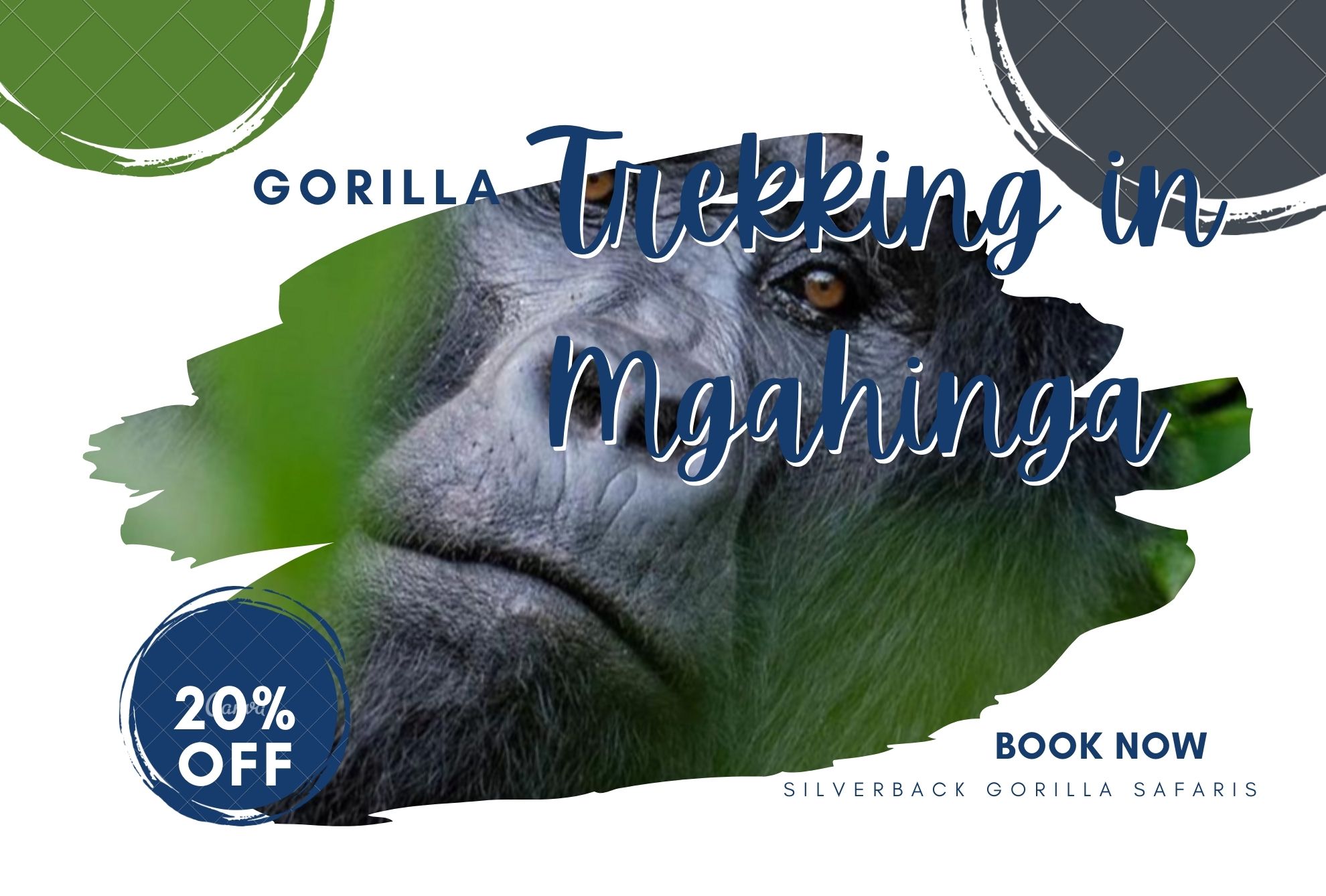
Characteristics of Mgahinga Gorillas
Mgahinga Gorillas belong to the “mountain gorilla” sub-specie of Eastern gorillas and are one of the largest living Primate species on Earth. They are also referred as Gorilla beringei beringei and are categorized as “endangered” under IUCN Red List with their World’s population estimated to be about 1080 individuals.
Mgahinga Gorillas live in the Virunga Conservation Area (that also encompasses Volcanoes National Park of Rwanda and Virunga National Park of the Democratic Republic of Congo. These Giant Apes are characterized by muscular arms, wide chests as well as huge hands and feet. Because these creatures occupy high altitude areas with colder temperatures, their fur is longer and thicker than all the remaining gorilla sub-species to allow then comfortable live in their natural environment.
A fully-grown mountain gorilla weighs between 130 and 220 kilograms and measures 1-2 meters fall. These primates are herbivorous and their diet typically comprises of pulp, plant roots, tree barks, succulent leaves, bamboo shoots, stems, vines, wild celery and fruits of different plant species.
The natural habitat of Mgahinga Gorillas is thick rainforests, mixed forest, Bamboo forest as well as Sub-Alpine grassland on the volcanic peaks. On life span, they are said to live up to an average of 40 years, although some have observed to have lived for up to 50 years.
Their gestation period is 8.5 months, after which one live baby is born (sometimes twins) weighing between 1.4 and 1.8 kilograms (about half the average weight of a human baby). These creatures however grow faster than humans, reaching maturity at 10 years for females and 12 years for males. While mothers are the primary caretakers, siblings and silverbacks usually offer a helping hand in raising the baby. Baby gorillas are surprisingly not born with teeth, like humans and entirely depend on mother’s breast milk until 2 years, although solid foods are slowly introduced in the course of their growth until they are able to depend on other foods.
Mgahinga Gorillas are said to be highly intelligent and use different tools like other Apes and use several vocalizations for communication.
Gorilla Trekking in Mgahinga Gorilla National Park
Walks from the Tented Camps/Safari Lodges to Ntebeko Visitor Center usually start between 6:30 and 7:00am, followed by registration and briefing that lasts 30 to 45 minutes. This is followed by allocation of visitors to the only habituated gorilla group, limited to 8 persons.
The limit on number of people visiting Mgahinga Gorillas is done to ensure safety of the Giant Apes from contracting airborne pathogens in addition to increasing chances of sighting, since it is believed that bigger groups usually scare away these gentle and timid creatures.
Treks begin by 8:00am and go through the slopes of Virunga Mountains for half an hour to almost three hours when evidence of gorilla nests (for the night before) start being noticeable. This means the gorillas are close by and therefore it will take another one hour to finally make contact with the Giant Apes. When contacts are made, you will notice slow movements within the thick vegetation as the primates get close and slowly come out.
When the Giant Apes finally emerge from the dense vegetation, you will clearly have a view of their daily routines hence a truly jaw-dropping experience to behold. Visitors have a total of one hour to spend with the mountain gorillas after contacts are made.
Our Client Says
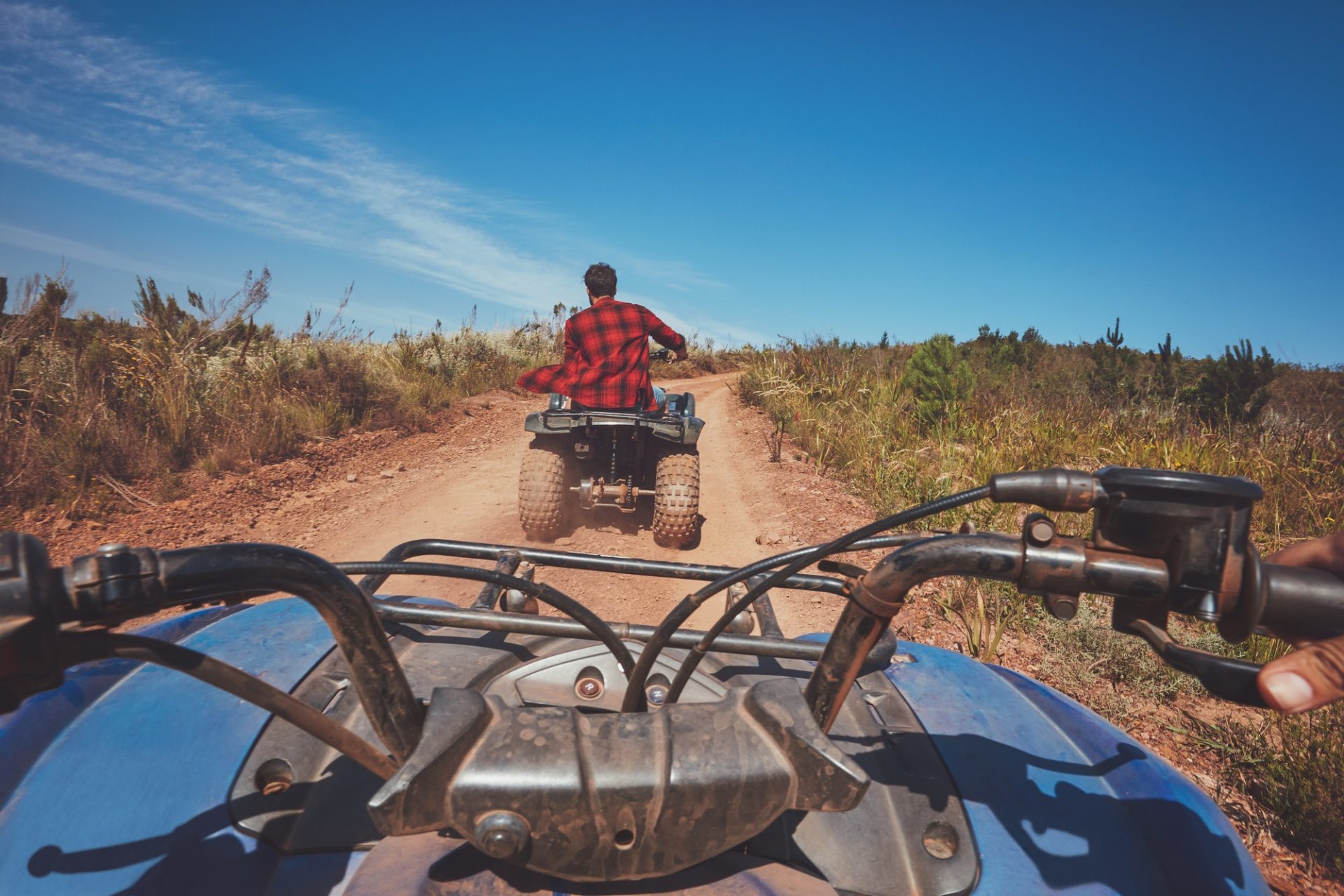
Frequently Asked Questions?
While Mgahinga Gorilla National Park is open throughout the year, the best time of the year to go gorilla trekking is the drier season from June to September as well as December to February. During these months, forest paths/trails are more favorable to maneuver through as well as spending time with the mountain gorillas being pleasant, given the fact that chances of receiving rain is almost at zero. Drier forest floor means it is easier to walk and hike the slopes of Virunga Mountains and because most visitors prefer this time of the year, gorilla trekking permits are difficult to acquire at short notice hence advance booking is recommended.
The wet season-March to May and October to November receive heavy downpours and forest paths/hiking trails become challenging and Park roads’ conditions become so bad thus inaccessible.
There are several sleeping options in Mgahinga Gorilla National Park after gorilla trekking adventures and they range from luxury to the more affordable budget options. These places are;
Mount Gahinga Lodge
Situated at the main entrance of Mgahinga Gorilla National Park, Mount Gahinga Lodge is a luxurious option that sits on the sun terrace that overlooks the magnificent Virunga Mountains. It features 6 Bandas made of Stone walls and Papyrus roof, each named after a Virunga Mountain and offering en-suit facilities. Guests here are guaranteed of enjoying vast dining areas, open-space lounge, terrace, cozy fireplace, massage room and gift shop. Three of the Bandas have double beds while the remaining ones feature twin beds with common room amenities being shower, flush toilet, cold/hot running water, wash basins in addition to Private veranda.
Other places to stay in this small National Park are Mucha Hotel in Kisoro, Amajambere Iwacu Community Rest Camp, Travelers’ Rest Hotel Kisoro, Mgahinga Rest Camp, Kisoro Tourist Hotel and Mutanda Lake Resort for visitors who plan to add the spectacular Lake Mutanda.
A maximum of 8 visitors are allowed to trek Mgahinga Gorillas and this principle/rule is strictly implemented without fail. There are a number of reasons why the number of people trekking a particular gorilla family is limited to eight (8) and these include the need to reduce behavioral changes because it is believed that large crowds can stress or inconvenience the Giant Apes as they go about their day-to-day activities.
The limit is also placed to reduce the risk of exposing the endangered Giant Apes to airborne pathogens, resulting from tourist visits and given the 98.2% relatedness of their DNA to humans, they are susceptible to several human diseases such as cough, flue and measles among others.
The age limit for trekking Mgahinga Gorillas is 15 years and there are several reasons for this limit. Young children are said to be unpredictable and cannot remain calm, in case of a silverback charging. In most cases when visitors make contact with the habituated gorilla family, the dominant silverback has to make sure that visitors aren’t a threat to his group members and in so doing, he charges by beating the chest. A child may not restrain from screaming and running away, which might irritate the silverback gorilla more.
Another rationale of setting an age limit for trekking Mgahinga Gorillas is the fact that children are the main carriers of communicable diseases especially flue, cough and measles which also affect the Giant Apes.
Generally, gorilla trekking is strenuous which requires participants to be physically fit, and a child of 5, 7 or 10 years is possibly physically weak to take on the mountainous slopes for the mountain gorillas. Treks are likely to be slowed down if they involve young children.
Gorilla trekking permits for Mgahinga Gorillas cost $800 per person for foreign resident visitors, $700 per person for foreign non-resident tourists and Uganda Shillings 300,000 per person for East African resident visitors, issued by Uganda Wildlife Authority. The permits guarantee entry into the jungle to search and spend one hour with the mountain gorillas, services of a Park Ranger/guide and security through the Park (ensured by the armed Ranger). Because there is only one habituated gorilla group in Mgahinga Gorilla National Park, only 8 permits are issued per day and have to be booked at least 4-6 months before the trekking date.
How to obtain Gorilla Trekking Permits for Mgahinga Gorilla National Park
Permits for trekking Mgahinga Gorillas can be obtained from Uganda Wildlife Authority through a credible tour operators. It is important to first check availability of permits then making booking within 4-6 months in advance. Send an email directly to Uganda Wildlife Authority or reach at their Offices physically.
The Tour Operator will ease the entire planning process of the gorilla safari by planning for most convenient place of lodging, transportation by comfortable 4WD Safari Vehicle.
Gorilla Filming in Mgahinga National Park
Mgahinga National Park is one of the few places that offer gorilla filming in the wild and to start your adventure, you need to understand how to get the required media accreditation, acquire filming permits from Uganda Wildlife Authority, how to book gorilla permits for Mgahinga Gorillas and how to clear filming equipment at immigration.
Before being allowed to film gorillas in the wild, you must have a media accreditation, obtained from Uganda media Council and are charged based on the duration. Media accreditation cards for one month cost $175 per person, for 6 months cost $225 per person while for two years cost $325 per person. Requirements for applying are scanned passport as well as recent passport-sized photo, and it takes 2-3 working days to process for your media accreditation card.
The gorilla filming permit is required and usually costs 40% of the gorilla permit price and 10% monitoring fees. You will then be issued a filming agreement by Uganda Wildlife Authority. Most importantly, don’t forget to book for your gorilla trekking permit (that costs $700 per person. Other crucial procedures for undertaking a memorable gorilla filming adventure in Mgahinga Gorilla National Park include clearance of filming equipment by immigration, booking for comfortable accommodation and transportation as well as showing up on time.
3 Amazing Things about Mgahinga Gorillas
Mgahinga Gorillas are said to be roamers that are always on the move across borders of Uganda, Rwanda and Democratic Republic of Congo, although they are said to have now settled.
Mgahinga Gorillas use a wide range of vocalizations for communicating, and these are cheat beating, loud grunts, hoots, and sometimes sign language as was discovered by animal behaviorists.
Don’t be intimidated by the massive size of Mgahinga Gorillas because they are generally shy, peaceful as well as gentle and not what is portrayed in films like King Kong.
How to book a Gorilla Safari to Mgahinga National Park
Having made up your mind to undertake a gorilla safari to Mgahinga National Park and even choosing the trekking date, find a credible tour operator. Afterwards, send your inquiry to the Company email or call to make your needs known. The Tour Operator gets back to you with different gorilla packages for Mgahinga and costing. If what is given is within your budget and personal interests, confirm the safari then make payments.
Getting to Mgahinga Gorillas
The stunning Mgahinga National Park is nestled within the south-west of Uganda and is part of the Virunga Conservation Area. Access to the Park is in two ways- Air or road. Tourists planning to use the latter should be prepared for 8-10 hours of driving through smooth tarred roads to Kisoro Town, then murram to the Park. For Air, scheduled flights are organized daily by Aerolink from Entebbe International Airport or Kajjansi Airstrip to Kisoro Airstrip then take only one hour on the road to the Gorilla Park.
Therefore, visiting Mgahinga Gorillas is one of the best adventures for primate fanatics and it’s from here that travellers get to learn about the history of Mgahinga Gorillas, their characteristics, how trekking tours are conducted, best time of the year to trek them, maximum number of people allowed to trek these gorillas and why a limit is places, how gorilla filming is done and how to book gorilla safari to the incredible Mgahinga National Park.
Is Gorilla Trekking in Uganda Worth It?
A gorilla trekking experience involves a visitor taking a walk through the forest in search for gorillas. Bwindi impenetrable...
Gorilla Trekking Experience in Uganda 2025
Make it a goal to have a gorilla trekking experience when you plan to have an off-road safari in...
Expectations On a Uganda Gorilla Safari
A gorilla safari in Uganda is a one in a million activity one can undertake when they visit parks...
Park entrance fees for vehicles in Uganda
Park entrance fees for vehicles in Uganda As you and your loved ones prepare to embark on amazing journey...
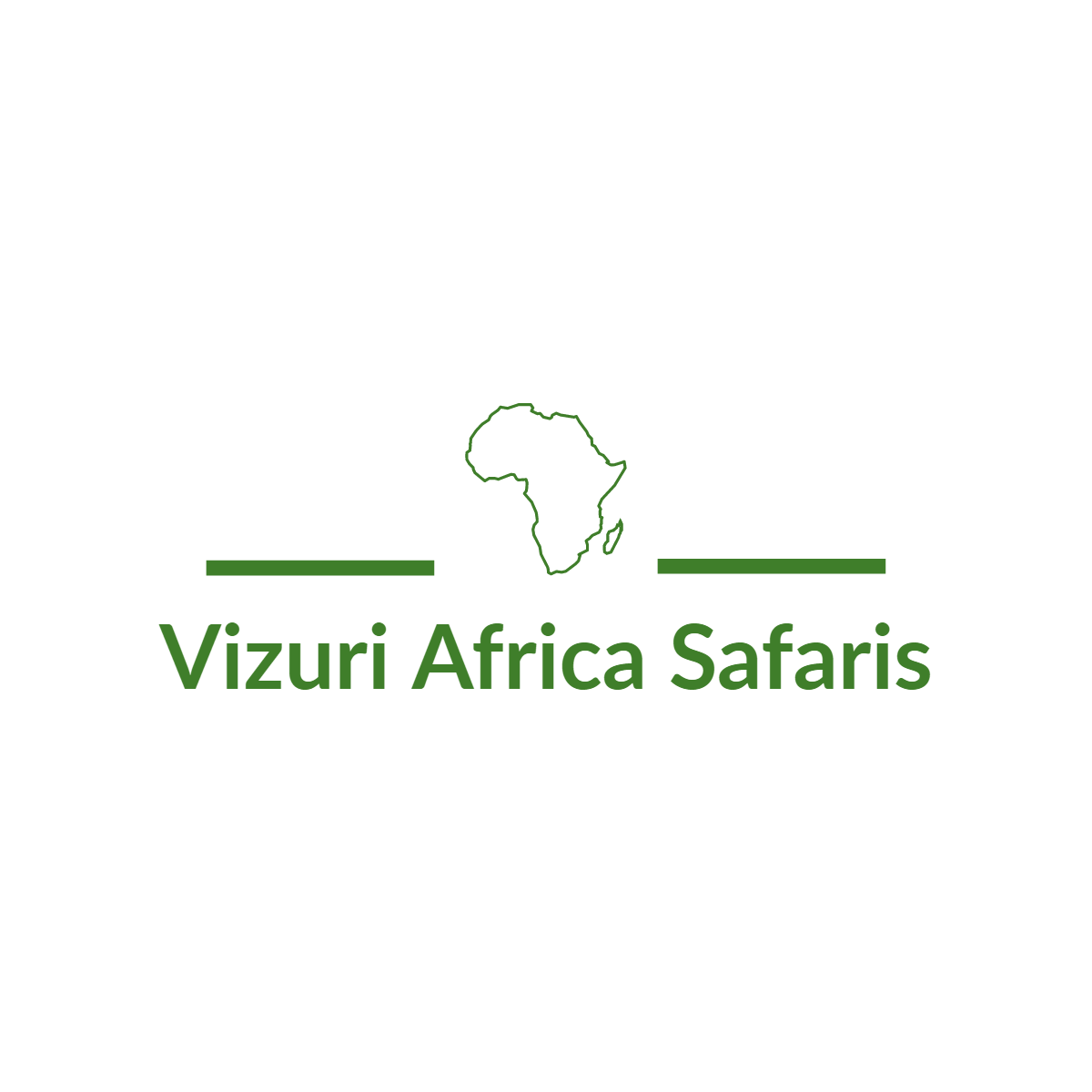
Silverback Goirlla Safaris is affliated to Vizuri Africa Safaris – the leading travel and tour company in Uganda. We offer tailor – made packages to various destinations in Uganda and beyond.
Popular Rwanda Safari Packages
Copyright © 2024. All rights reserved.













